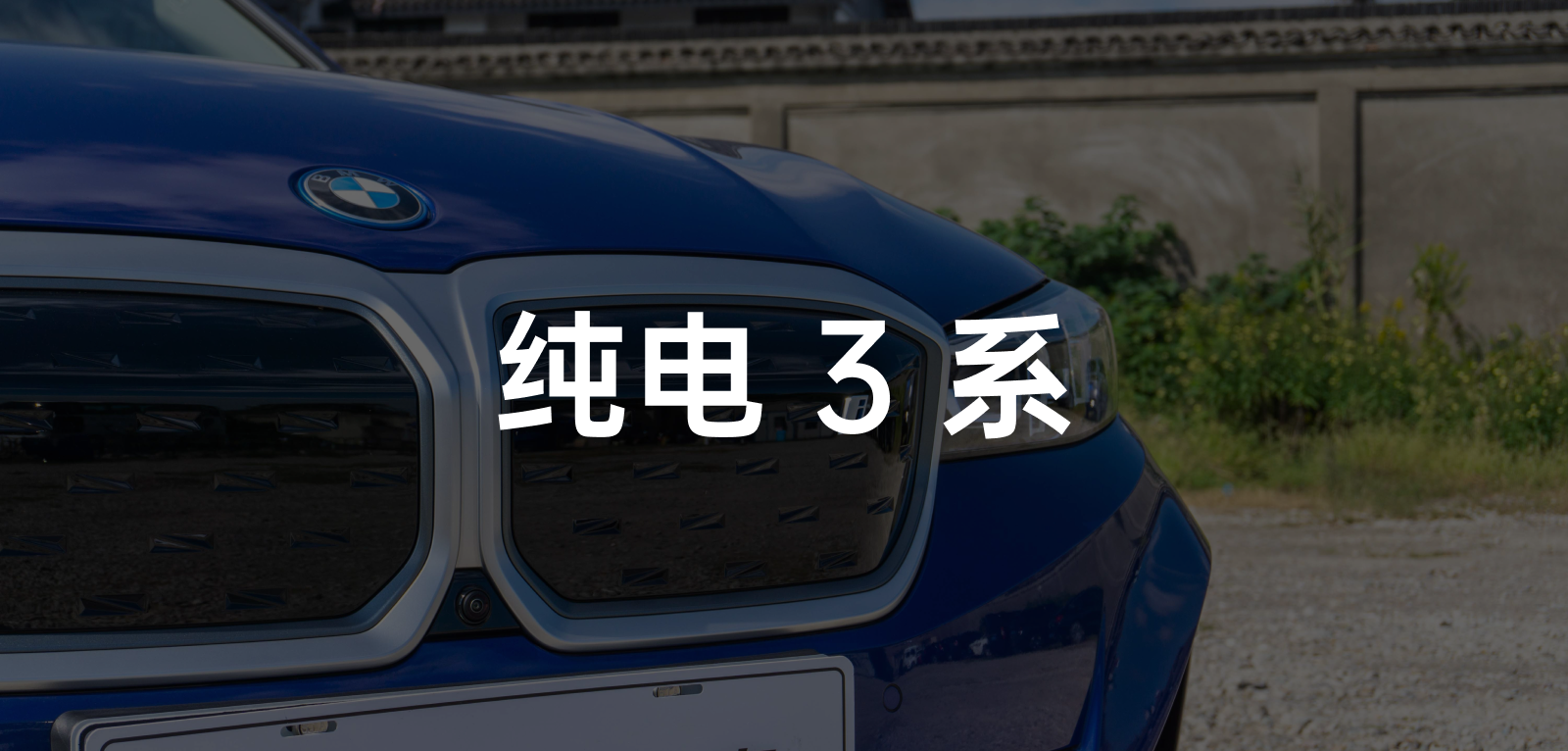BMW i3: A Pioneer of Luxury Brand New Energy Strategy
In 2013, BMW released its first mass-produced car in the i series, the BMW i3, in China. In 2014, BMW introduced the extended range version and all-electric version of the i3 to Chinese consumers. The launch of the i3 can be regarded as BMW’s preemptive strike in the luxury brand new energy strategy.
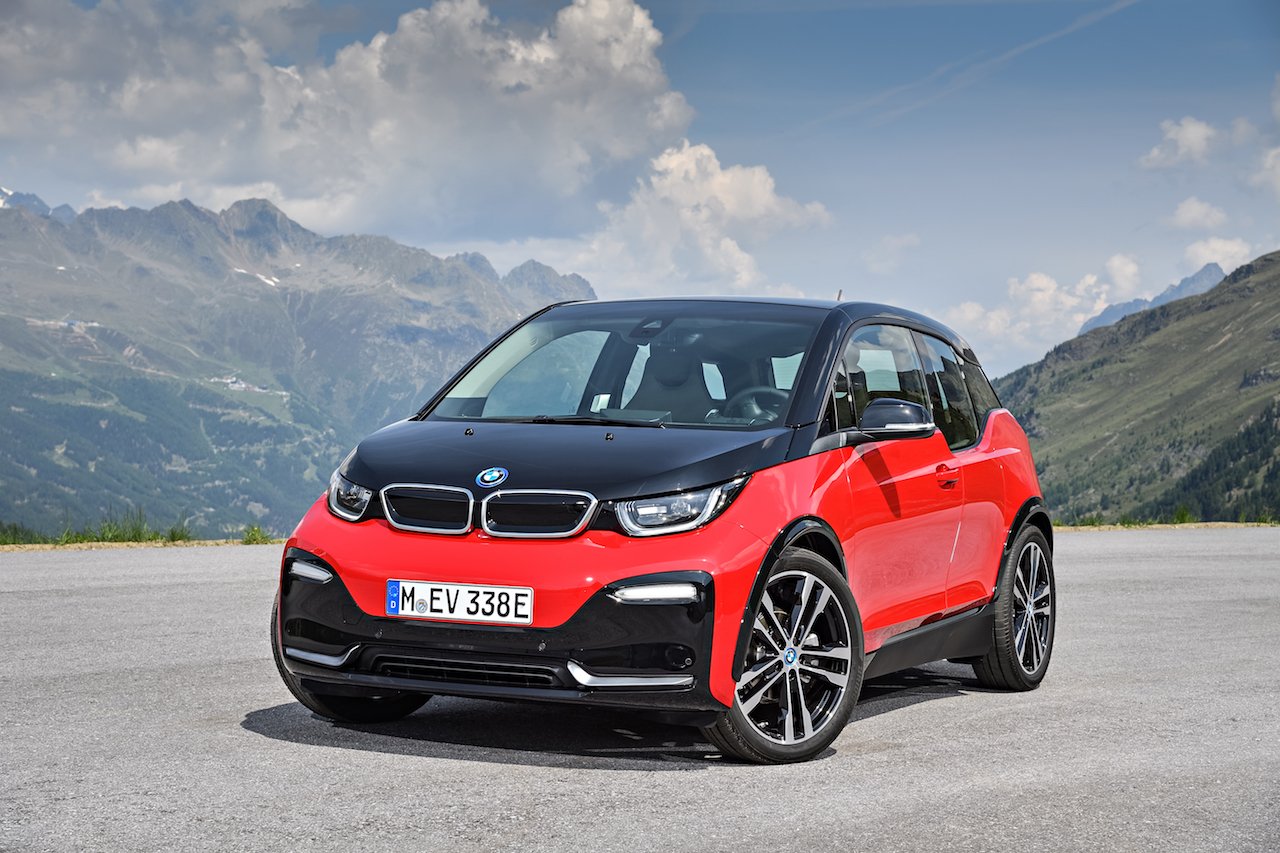
The design features of the fully enclosed front face, four-wheel layout, dual independent suspension screen center console, pure electric range extender dual power, all-carbon body, and other elements make it hard to imagine that this is a car model that was released almost 10 years ago.
Even today, the old i3 is still a timeless classic, except that its battery range and energy replenishment have become obvious pain points. Therefore, it was produced until 2022, when it was officially discontinued and replaced by the second generation i3.
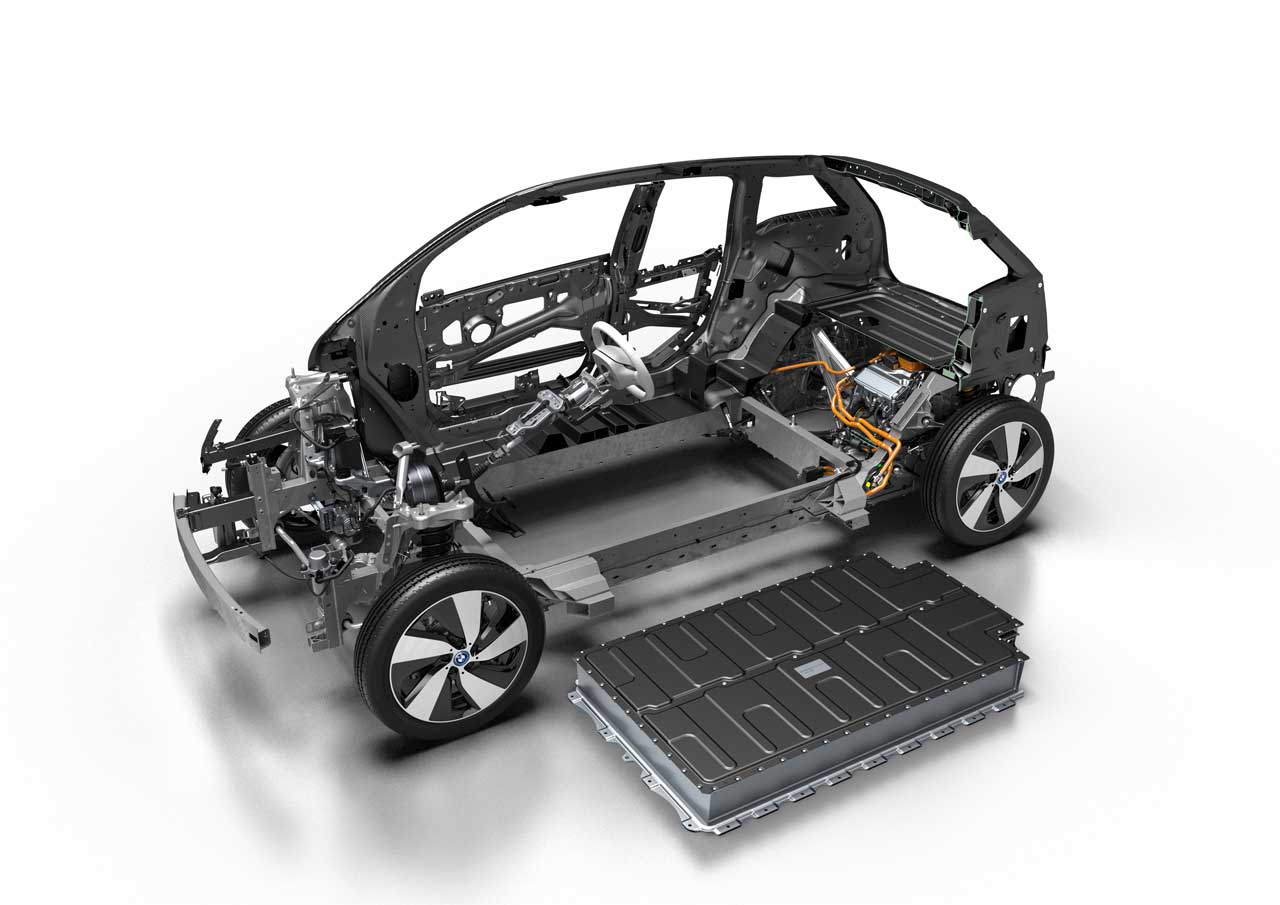
As a new generation product, the second-generation BMW i3 did not continue the agile and compact appearance of the first-generation i3. Instead, it adopted the same CLAR hybrid platform as the fuel version of the G-series 3 series and was domestically produced at the BMW Brilliance factory. Therefore, there has been a significant improvement in power, battery range, and practicality.
However, due to the shared platform, this generation i3 looks almost identical to the domestic fuel version of the 3 series (G28) from the inside out, which is also referred to as a “gas to electric” car model. Recently, I conducted a deep test drive of the BMW i3 eDrive 35 L produced by Brilliance BMW with a preconceived impression.
In this article, I will analyze whether the Brilliance BMW i3 “gas to electric” can surpass itself in terms of design, driving, battery range, intelligence, and optional features. Additionally, I will examine its product power in the crowded field of all-electric vehicles.
First of all, It’s a 3 Series
The biggest factor that has led people to refer to the BMW i3 as a “gas to electric” car is its highly consistent appearance with the fuel version of the 3 series (G28), with subtle improvements in length, width, height, and wheelbase over the fuel version of the 3 series. The front bumper does not use the latest style of the mid-term facelifted 3 series and is more similar to the M suit of the previous version.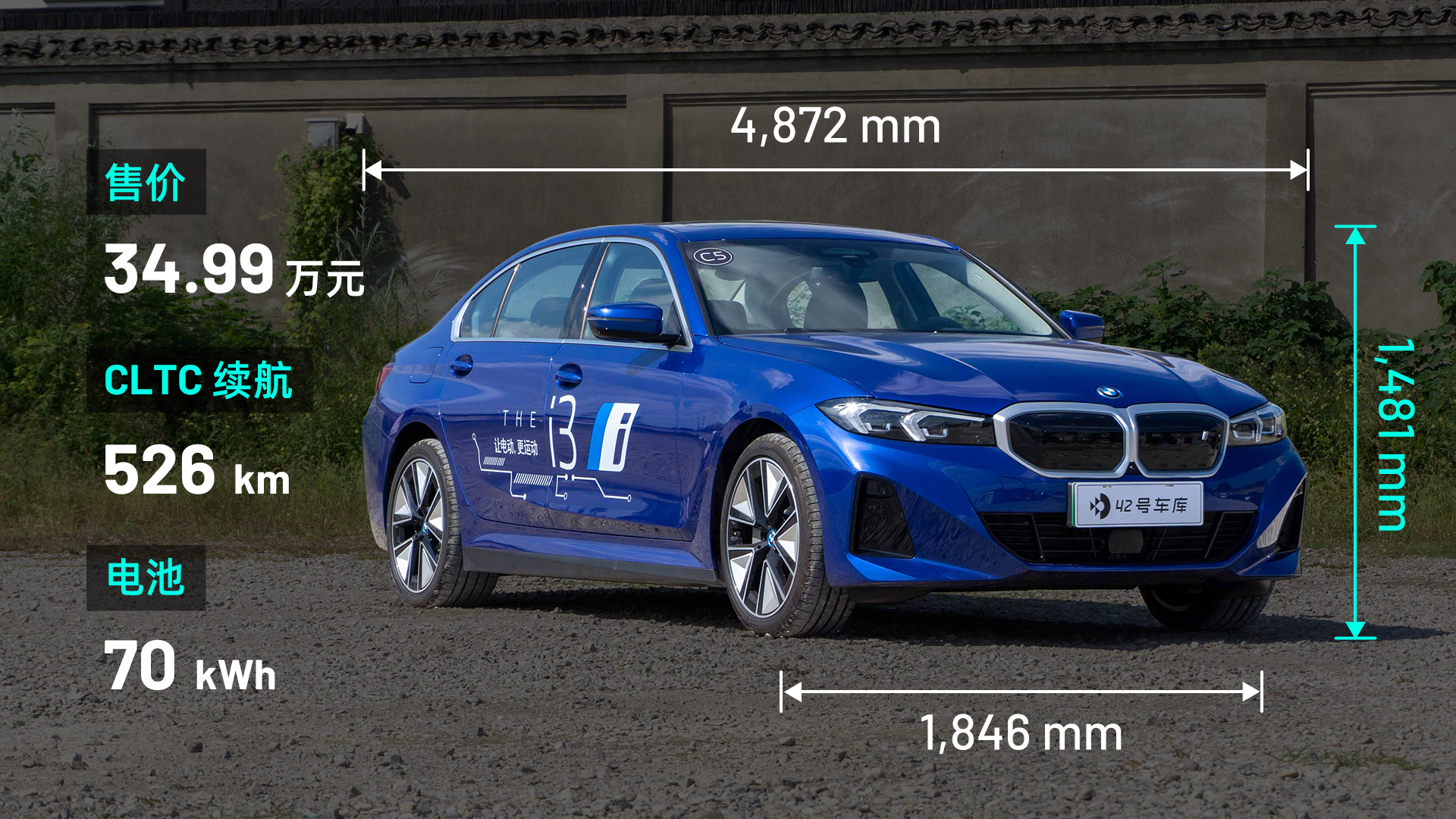
The size of the kidneys and the style of the headlights on the i3 are in line with the G28 after the mid-term facelift. The grille adopts a closed structure and is labeled with the “i” logo on the right side to represent its pure electric identity. The entire vehicle only has an air intake grille at the front bumper, and also has the function of active closure to improve the vehicle’s thermal management efficiency.
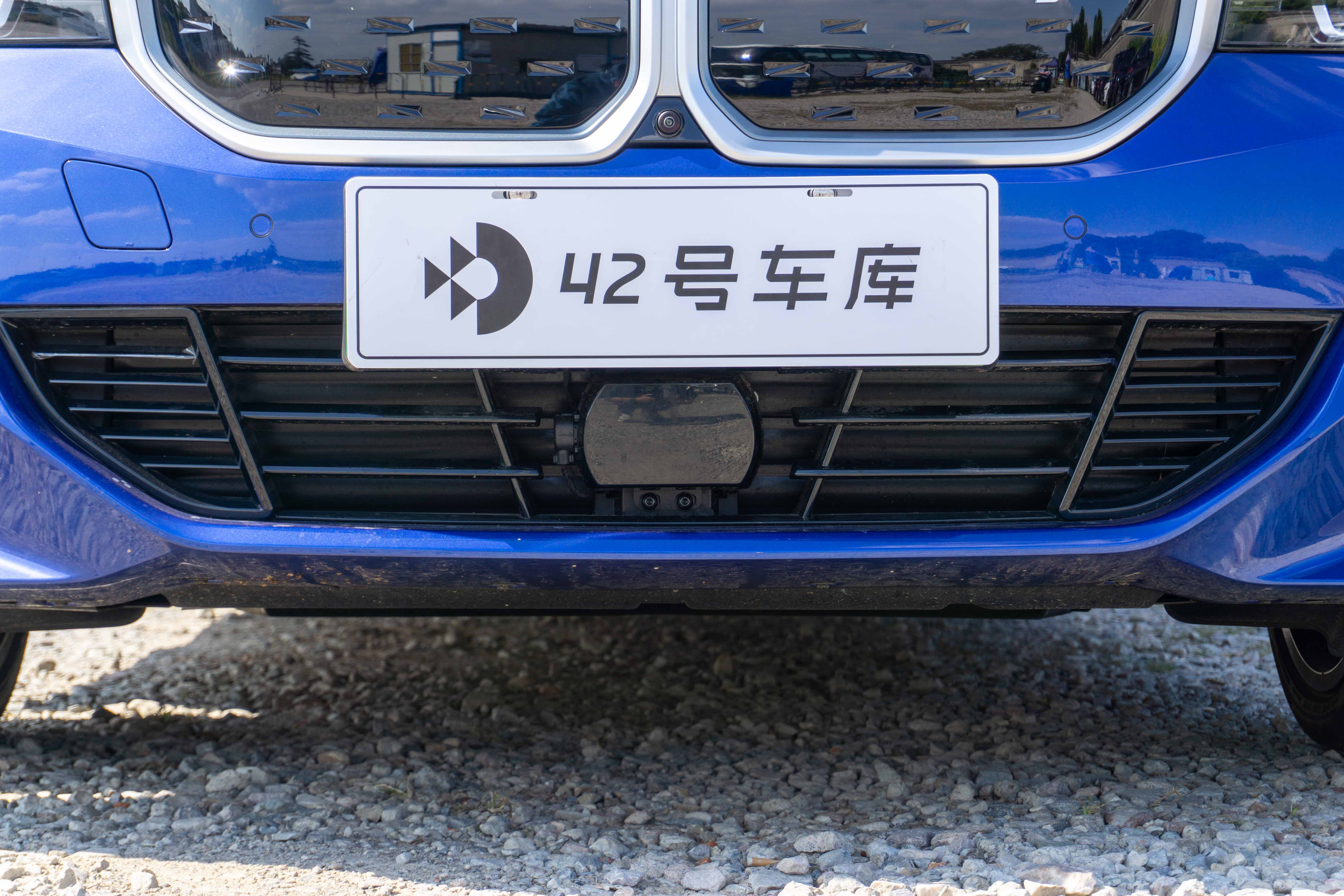
In terms of headlight design, the i3 is consistent with the mid-term facelifted 3 Series, using the latest inverted L-shaped daytime running light design. Among the many BMW models, it is highly recognizable and can be seen at a glance when driving outside, that it is the latest BMW 3 Series.
There is not much difference between the i3 and the long-wheelbase 3 Series in terms of the side profile, and the main distinguishing points are the aerodynamic deflector holes on the front fenders and the decorative plates below the side skirts. These are the differences brought about by the pure electrification of the 3 series in vehicle design.
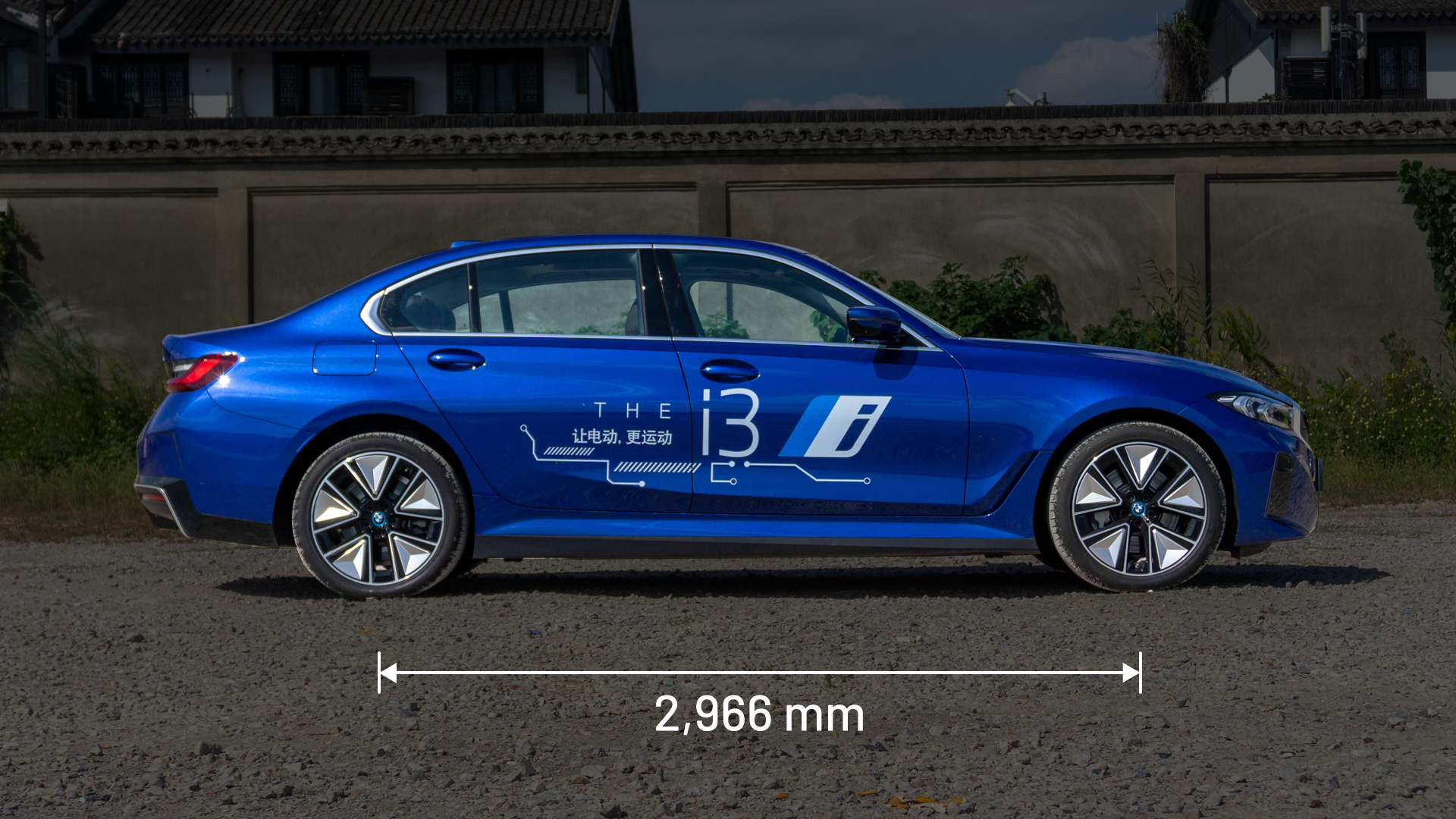
The i3 has aerodynamic openings on both sides of the front bumper and front fenders. According to official information, these two openings can reduce turbulence, disintegrate the vortex, and increase the vehicle’s coefficient of drag. In addition, the location of this partition has also been extensively tested by BMW and can prevent the paint from being damaged due to stones thrown on sandy roads.
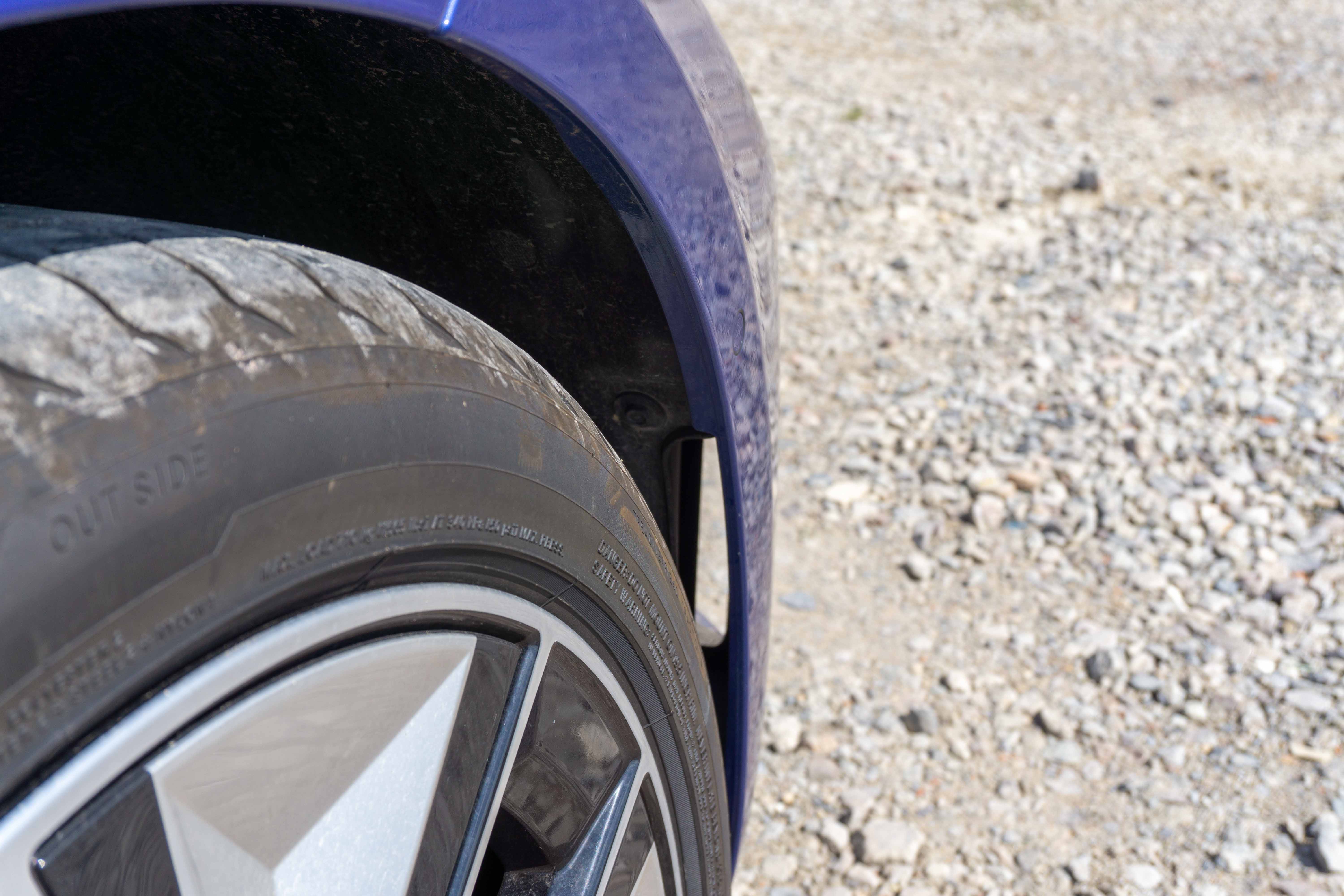
The model we are shooting this time is equipped with 19-inch aerodynamic dual-color wheels. Compared with the 18-inch wheels, they have a better appearance and can make the entire vehicle more full, but the optional price for this set of wheels is 14,300 yuan.The matching tires for the car are Yokohama ADVAN Sport V107 with sizes of 225/45 R19 for the front and 245/40 R19 for the rear, which are tires that are more inclined towards performance and handling.
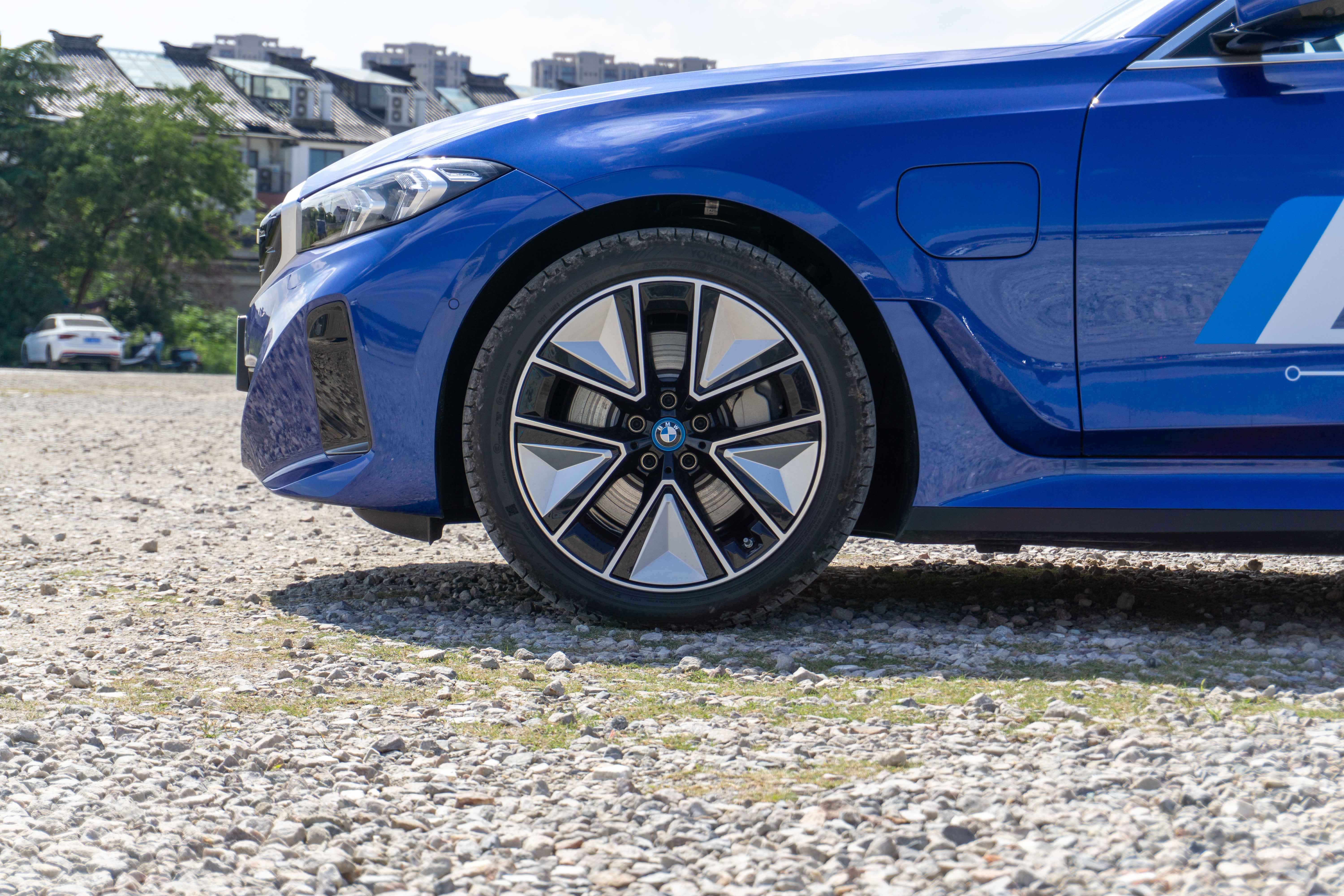
In addition, the BMW i3 has a plastic trim panel under the side skirt, which is not available on the gasoline-powered 3 Series. Its main function is to cover the thicker body of the vehicle. The i3 has a 70 kWh battery pack in addition to the gasoline engine of the car. In order to not affect the structure of the original car, the bottom had to be thickened to accommodate more batteries. If this décor panel is not installed, the battery pack will protrude under the chassis, similar to many low-price electric cars.
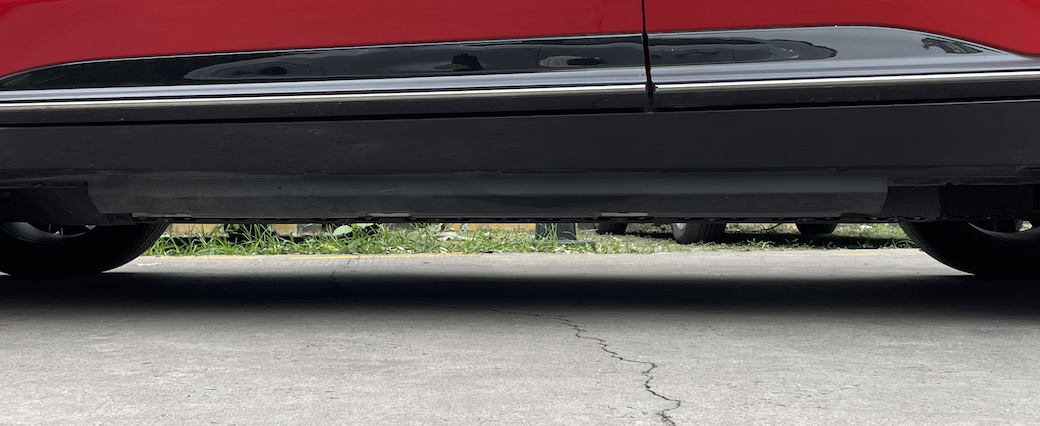
This trim panel not only covers the part of the battery that protrudes from the body of the car, but also helps to better streamline the vehicle’s chassis, allowing the airflow to smoothly pass over the chassis, which also lowers the vehicle’s drag coefficient.
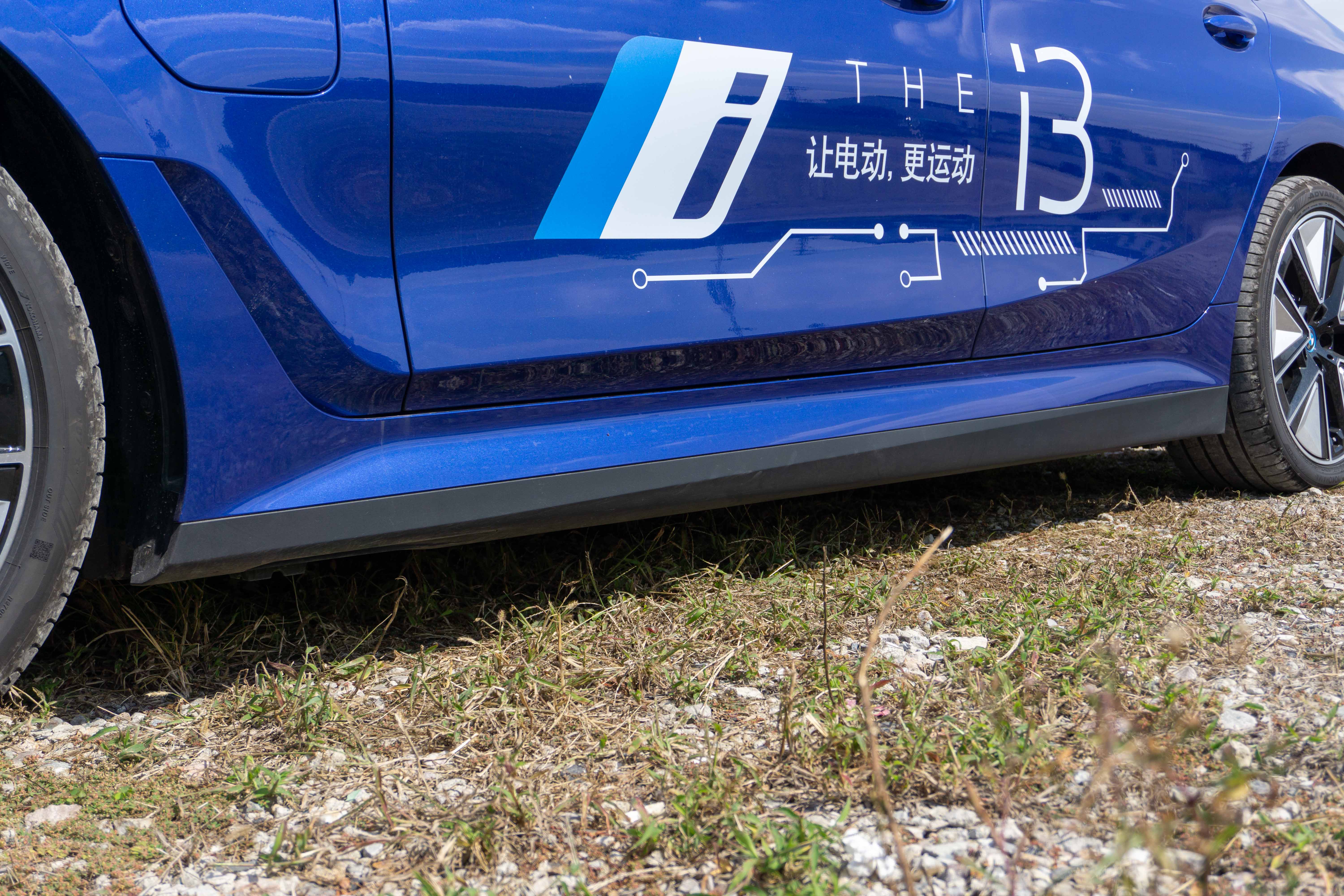
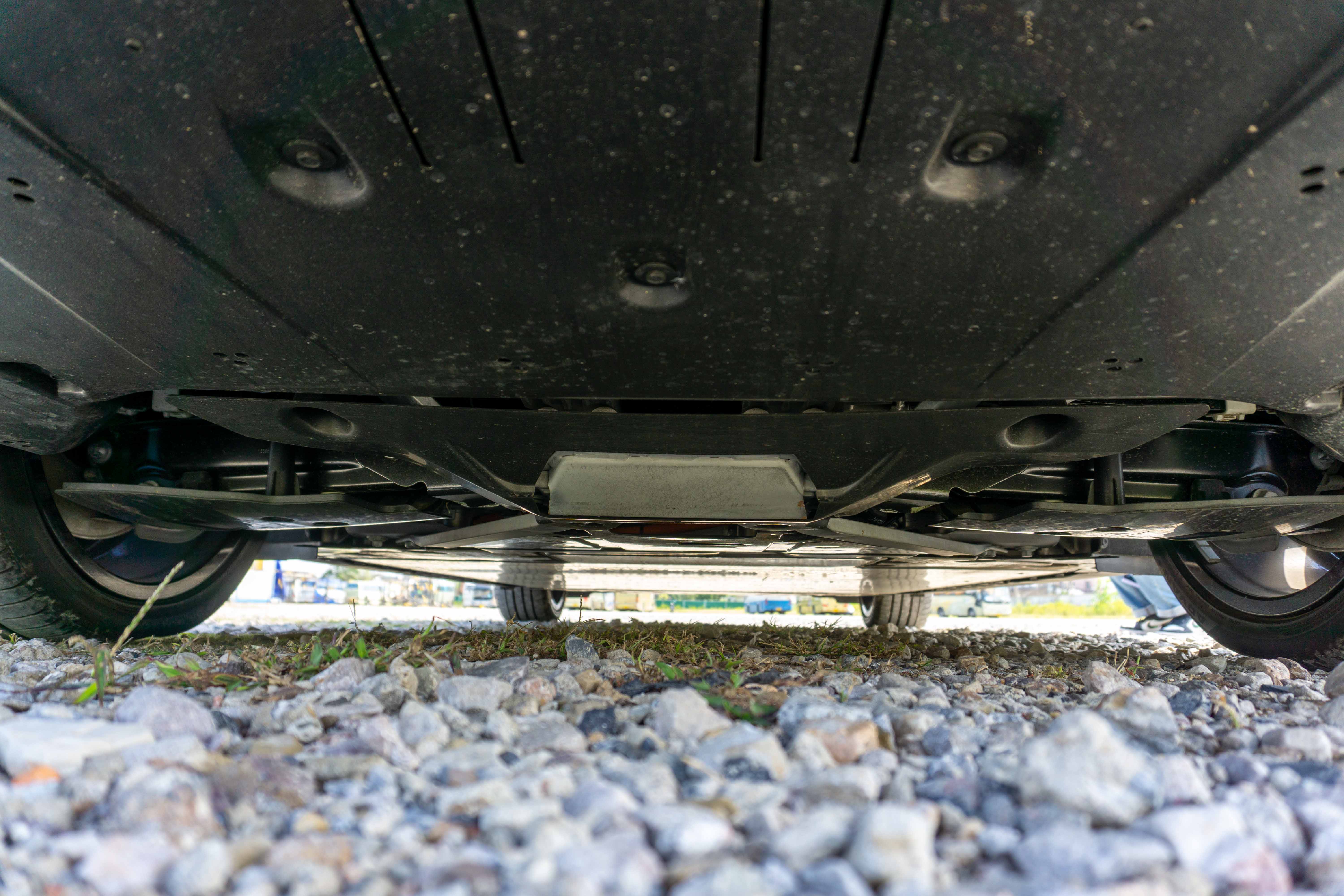
According to BMW’s official introduction, the i3 has a wider track width than the gasoline-powered 3 Series, which makes the vehicle more stable during extreme cornering. The performance improvement brought by the wider track width in daily driving is difficult to perceive. However, in terms of visual effects, the wheels slightly protrude from the fender of the body, rather than being embedded within the wheel arch, making the vehicle look particularly sporty, and full.
However, the laws and regulations in our country clearly stipulate that vehicle wheels are not allowed to protrude from the body of the car, so BMW cleverly designed a slight protrusion on the i3’s rear fender to meet the regulatory requirements.
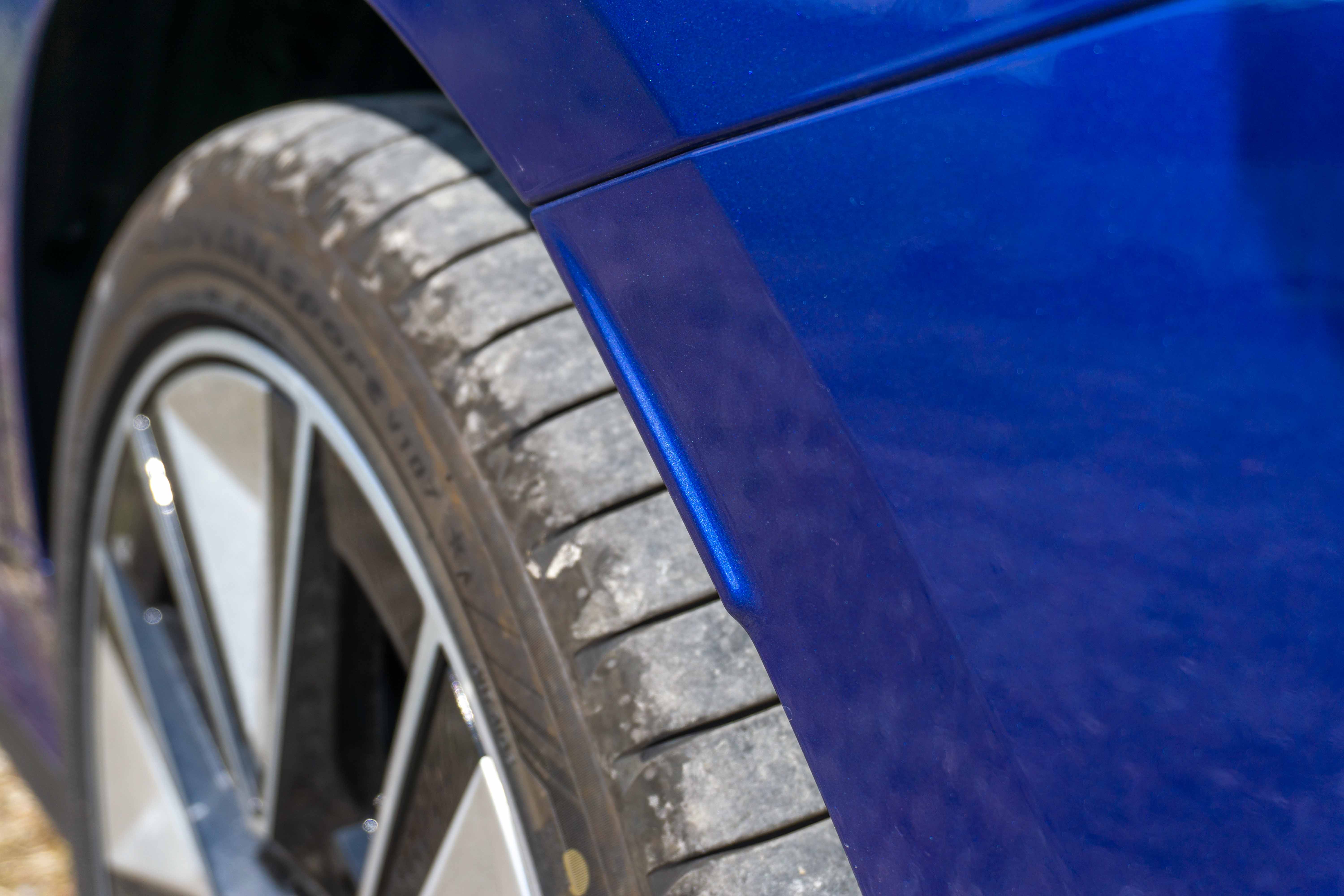
In terms of its tail design, the BMW i3 still maintains the overall style of the 3 Series, with two very large diffusers designed on the rear bumper, which is a significant difference compared to the gasoline-powered 3 Series.
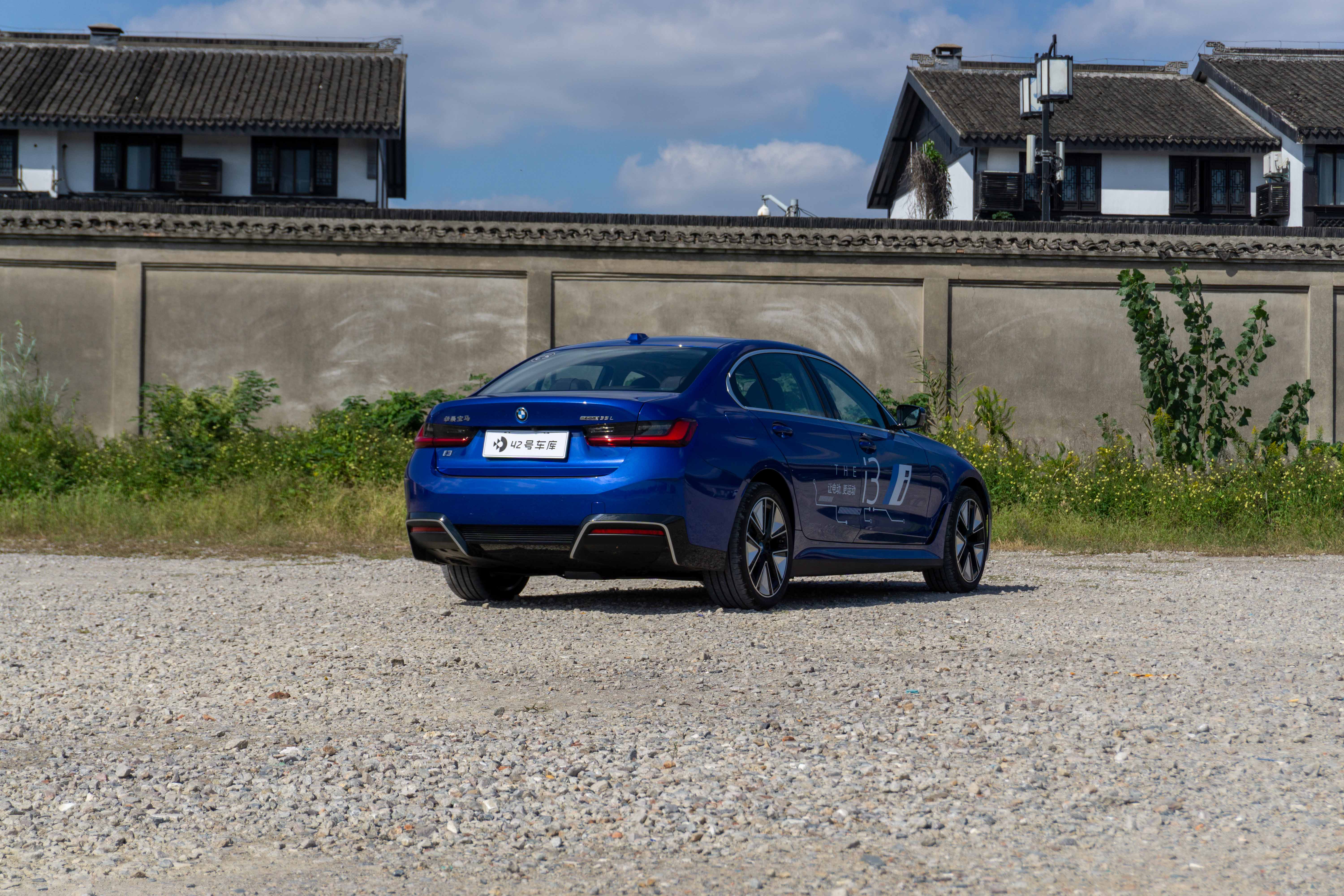
With the large diffuser design, the i3 looks particularly sporty, and makes the rear of the vehicle look particularly wide and strong.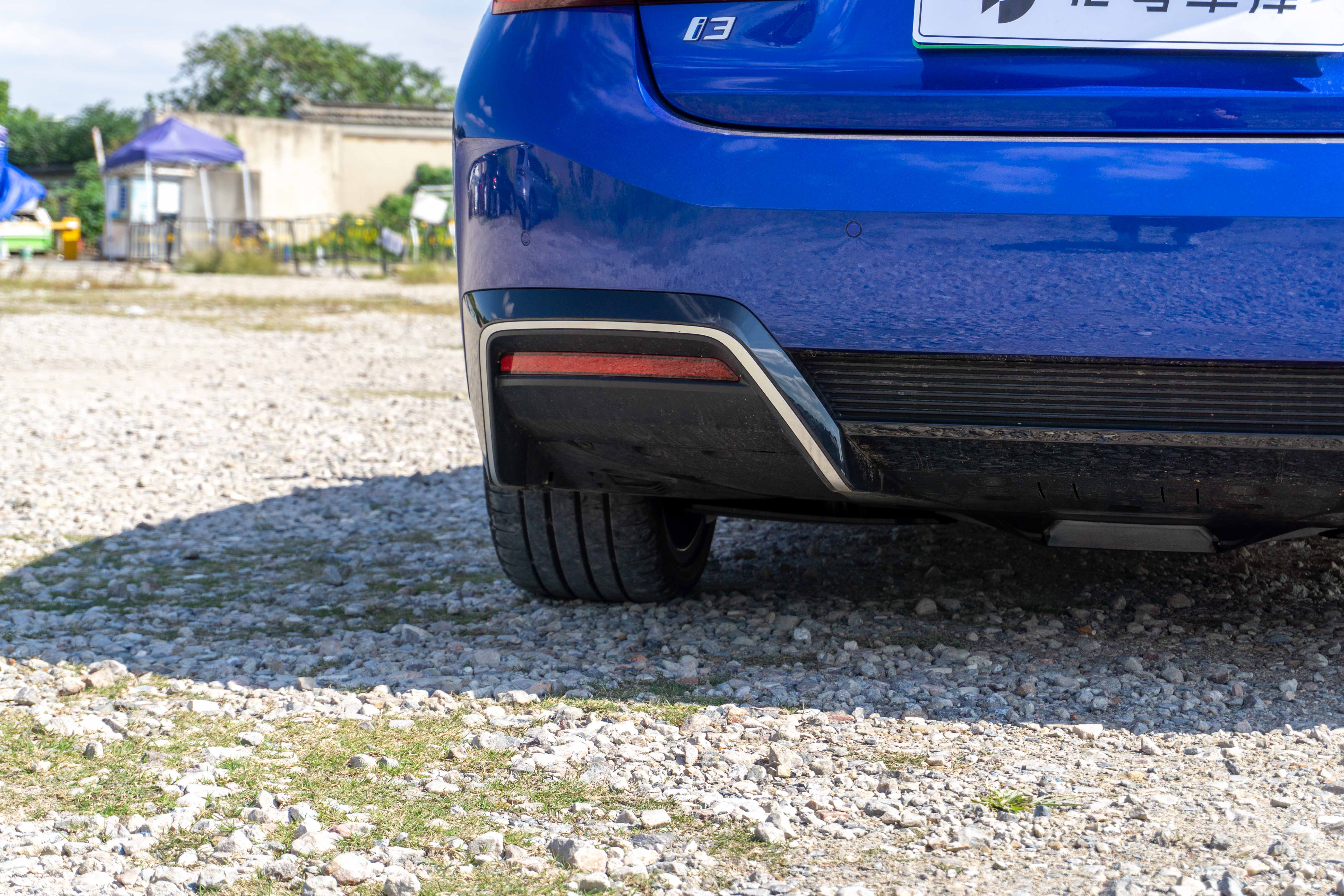
Overall, in terms of appearance, the i3 does not deviate from the overall design of the 3 Series. As a pure electric version of the 3 Series, the i3 has made improvements in many details of body design for electrification, especially in aerodynamics. Although it is not as stunning as the first-generation i3, the current design inherited from the 3 Series is still a well-received exterior design among Bimmer enthusiasts.
Practical with Innovation
Cabin Experience
Stepping into the cabin of the BMW i3, it can be said that it is “no more familiar”, remaining consistent with the 3 Series after the mid-term facelift. Similarly, it features the currently popular combination of a 12.3-inch LCD instrument panel and a 14.9-inch central control screen. Moreover, this screen has a certain curvature and slightly tilts towards the driver’s side for easier touch operations.
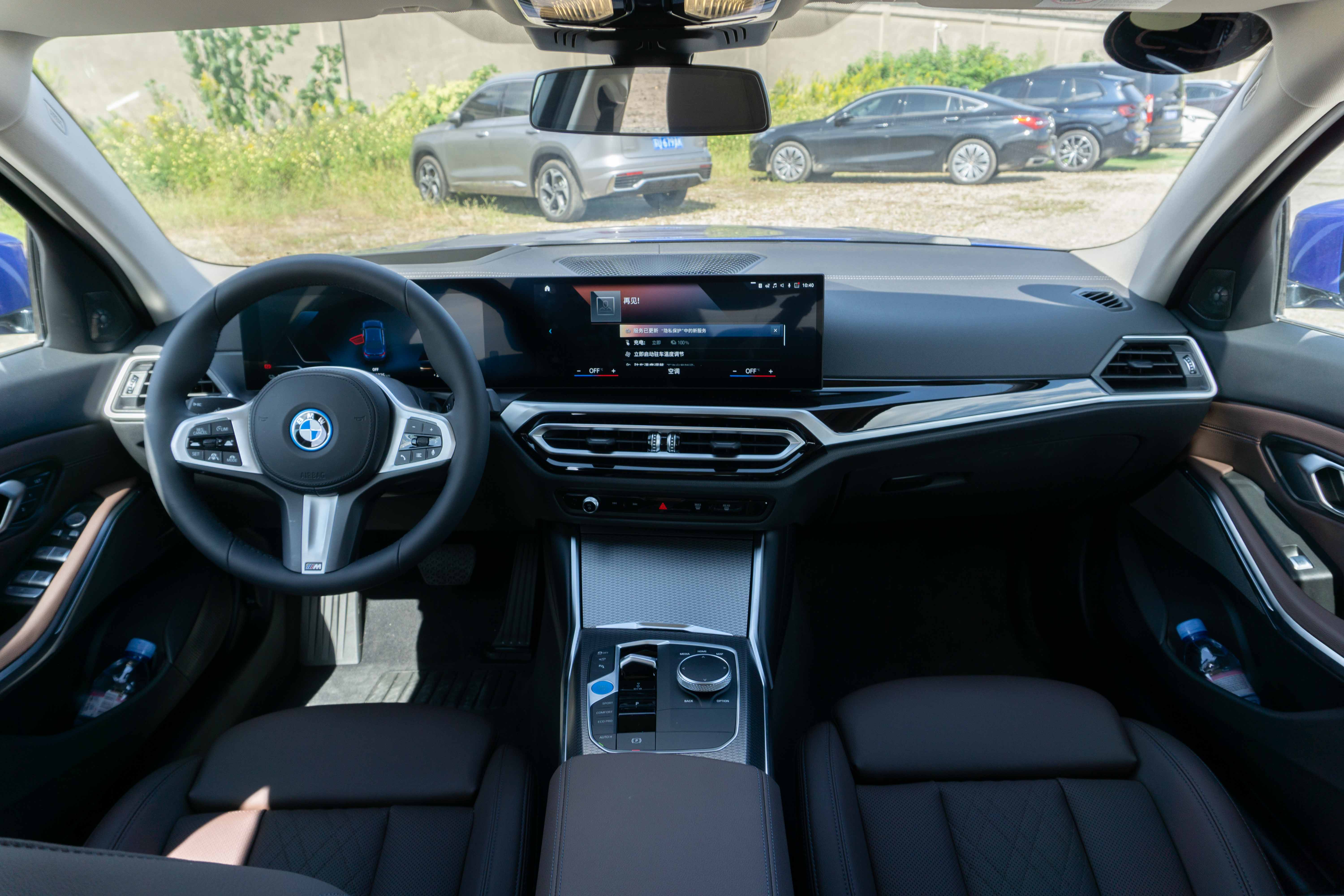
BMW’s 12.3-inch LCD instrument panel is designed with a concise style, displaying the vehicle speed on the left and the power output/recovery percentage on the right. After turning on the driving aid, the speed in the center will move to the left, becoming the visual display of the driving aid. Drivers can easily obtain various driving information while driving.
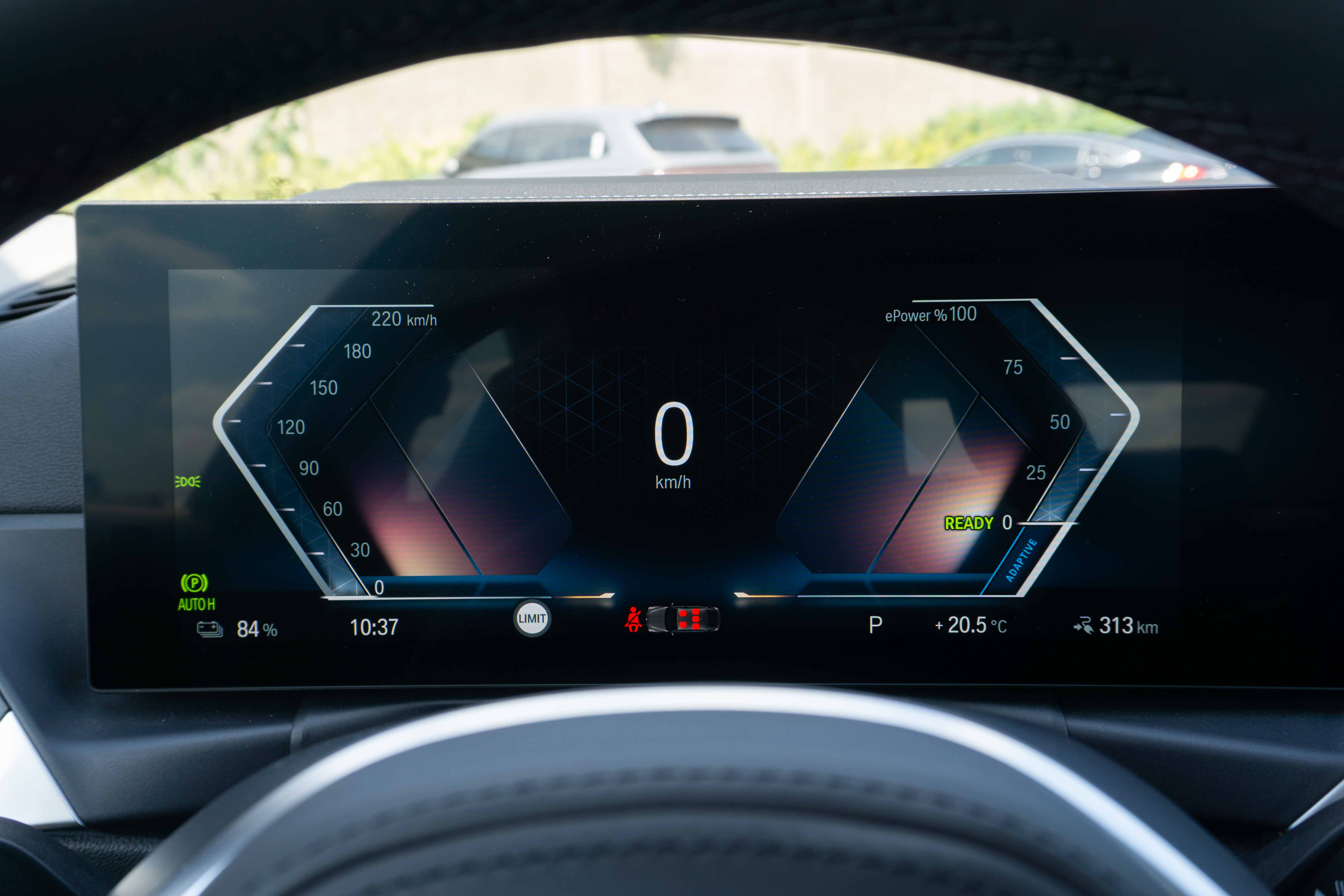
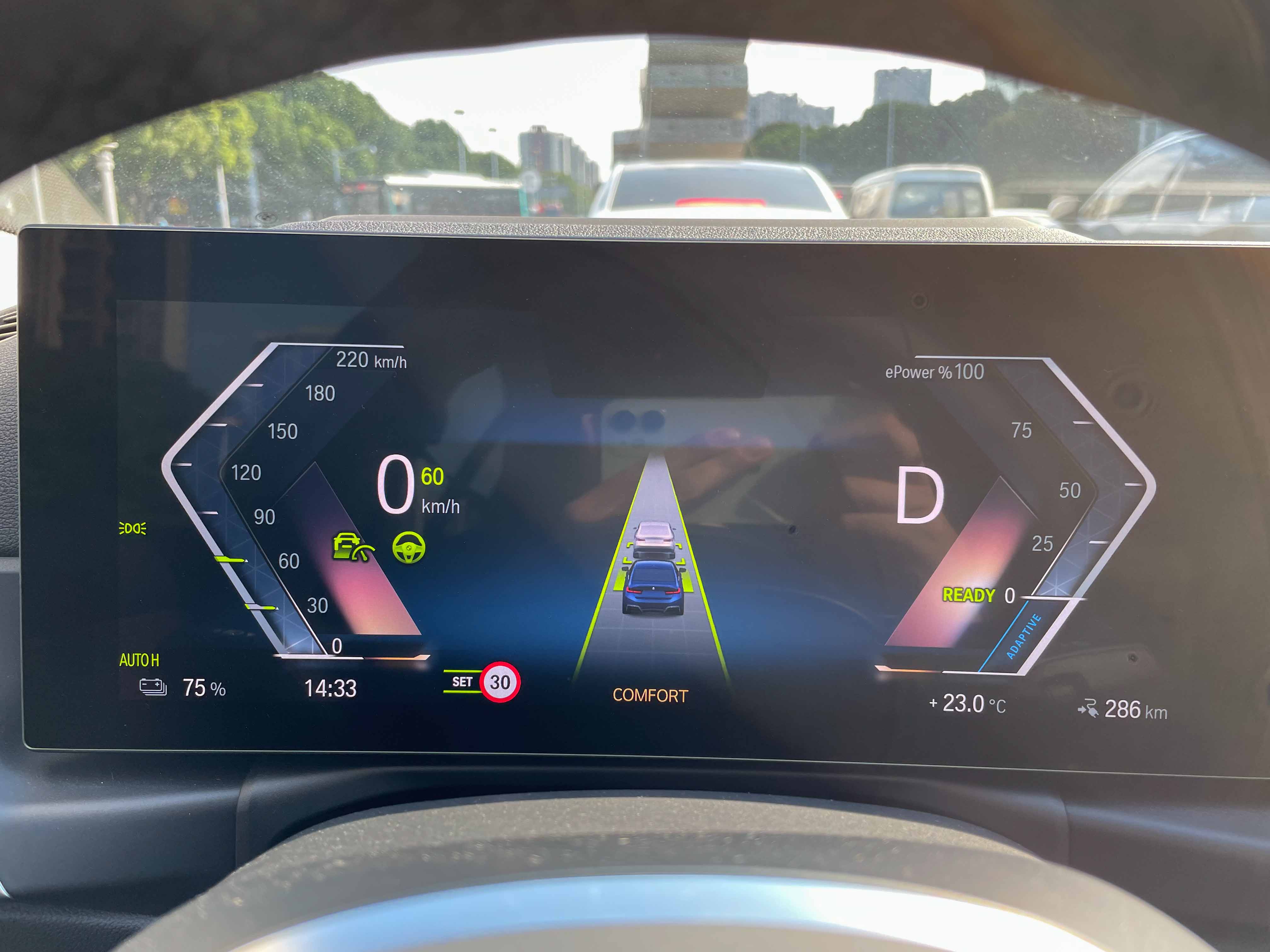
BMW i3 is the first model to use the iDrive 8 system on this 14.9-inch central control screen. However, the system has many localized applications, such as QQ Music, Ximalaya, and WeChat.
But the downside is that BMW has put all vehicle settings and application Apps together on this screen, which are a bit messy. If you want to find a specific setting of the vehicle, it takes some effort, and the overall logic of the car system is not particularly user-friendly, requiring a certain amount of learning time.
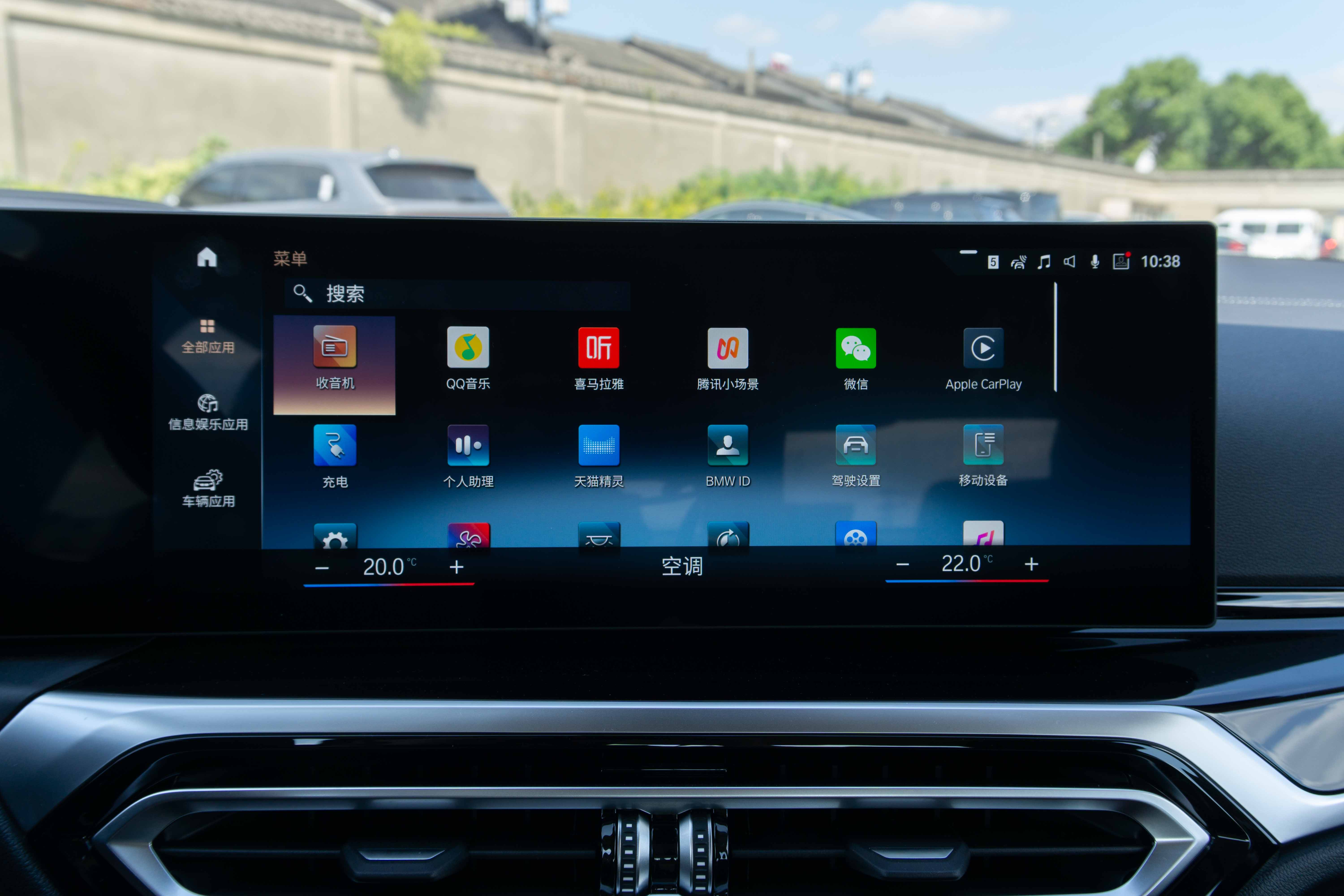 Compared with other new energy vehicles in the same price range, the BMW i3 performs worse in terms of the smoothness of the car’s infotainment system. Whether it’s dragging the interface or clicking on software, the i3’s infotainment system is not responsive enough and visible frame drops occur. Even when using the voice button on the steering wheel to control WeChat, there is still a waiting phenomenon, which is less efficient than stopping the car and directly using a mobile phone to respond to a WeChat message.
Compared with other new energy vehicles in the same price range, the BMW i3 performs worse in terms of the smoothness of the car’s infotainment system. Whether it’s dragging the interface or clicking on software, the i3’s infotainment system is not responsive enough and visible frame drops occur. Even when using the voice button on the steering wheel to control WeChat, there is still a waiting phenomenon, which is less efficient than stopping the car and directly using a mobile phone to respond to a WeChat message.

BMW i3 and the new 3 series have also eliminated the physical buttons for the air conditioning system and the classic eight shortcut keys, which is also a point of criticism for BMW enthusiasts. Fortunately, the voice on the i3 is still functional, clear and easy to hear, and the system can make quick actions in a short period of time, which to some extent compensates for the lack of physical buttons.
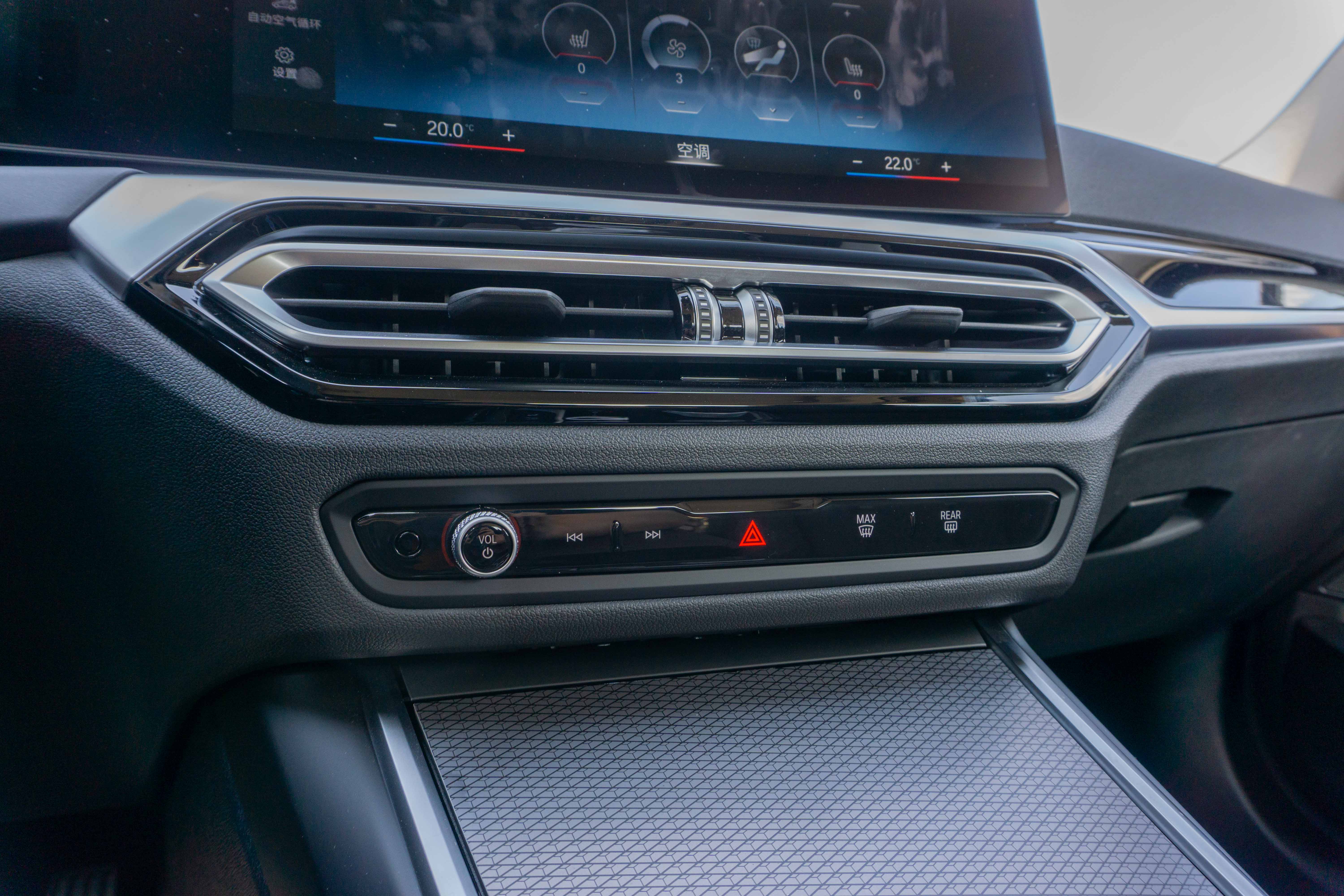
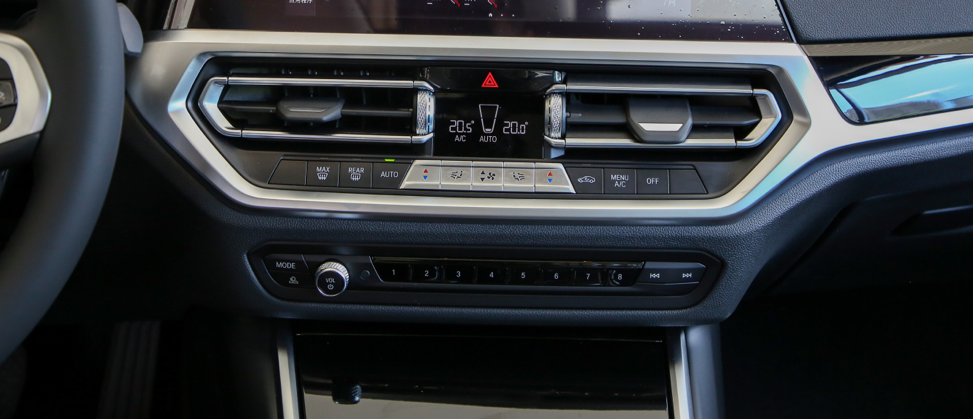
If you are familiar with BMW, you can also operate through the scroll wheel and buttons on the central control panel to achieve shortcut operations. The logic and operation are the same as the E and F Series BMWs, so even for old car owners, there is little need for additional learning costs when using this set of scroll wheels and physical buttons.
However, it is said that BMW will gradually replace the scroll wheel and physical buttons with virtual buttons in new car models.
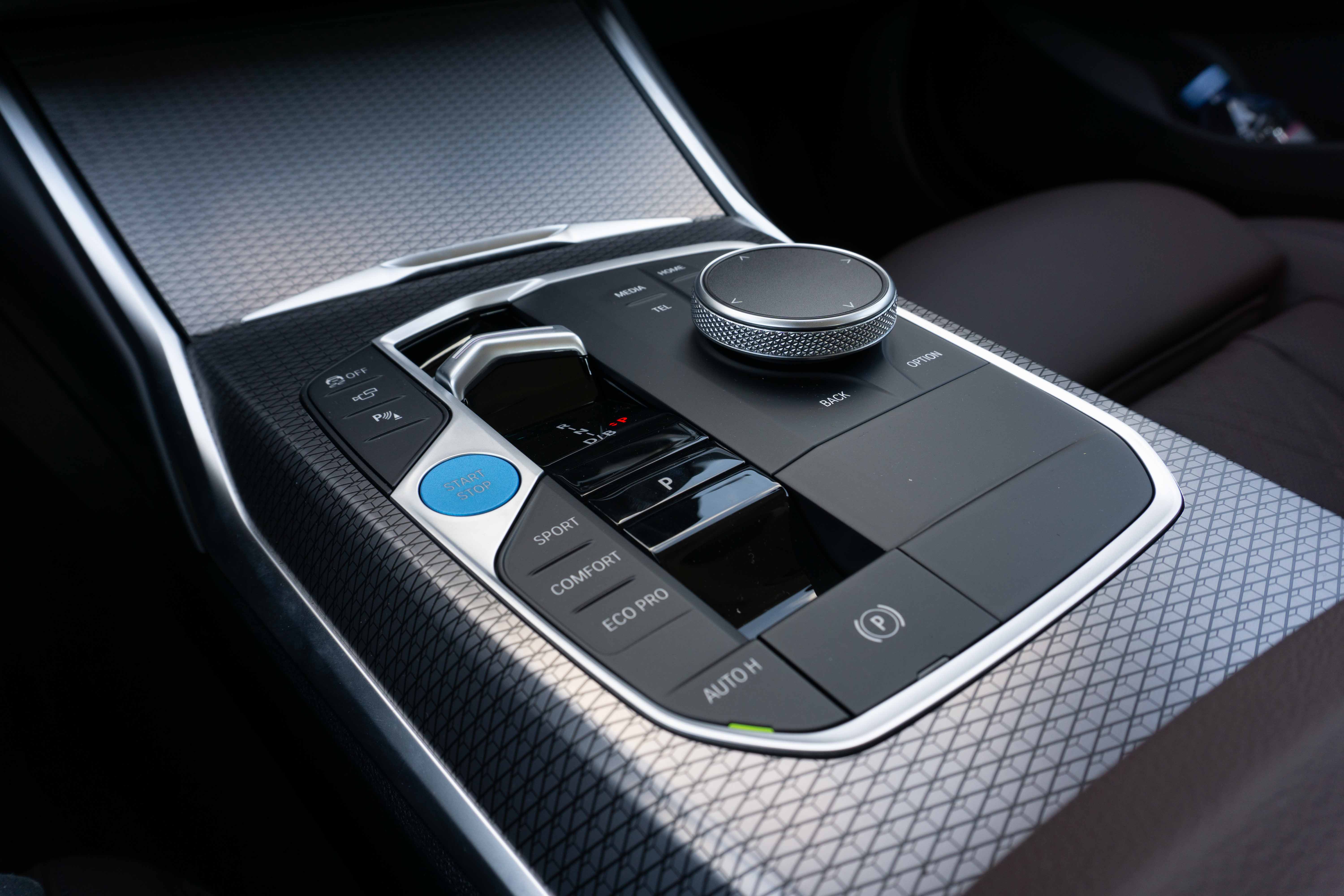
The test drive vehicle has many optional features related to driving. For example, the intelligent and interconnected driving cabin with HUD costs 10,000 yuan.
This HUD can display a wealth of information during driving, basically covering the information required for daily driving, such as speed, speed limit, navigation, violation camera, etc. It is recommended for drivers who are used to using HUD or pursuing technology.
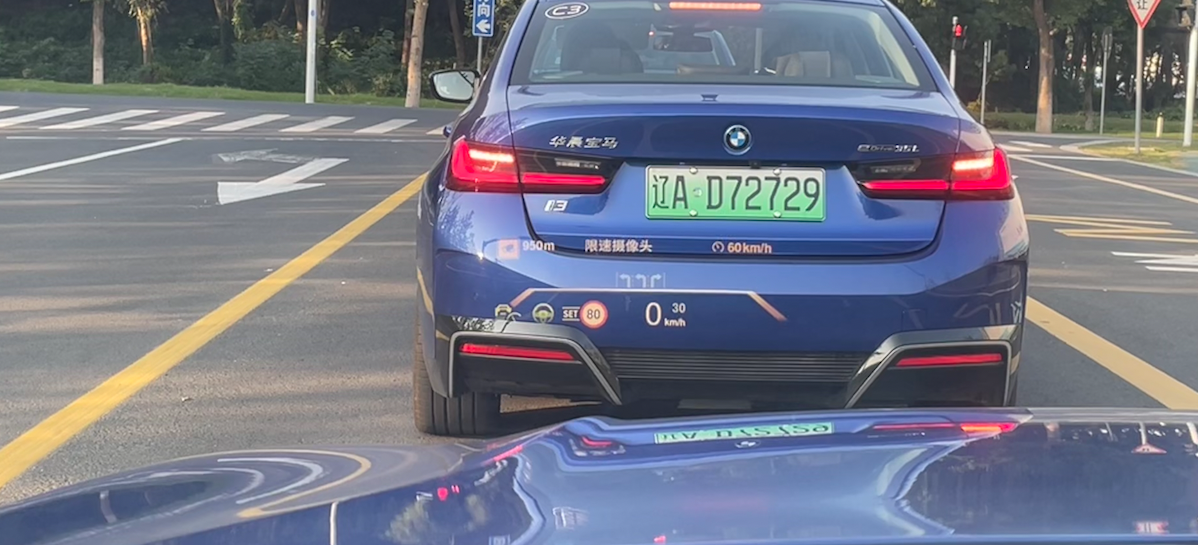
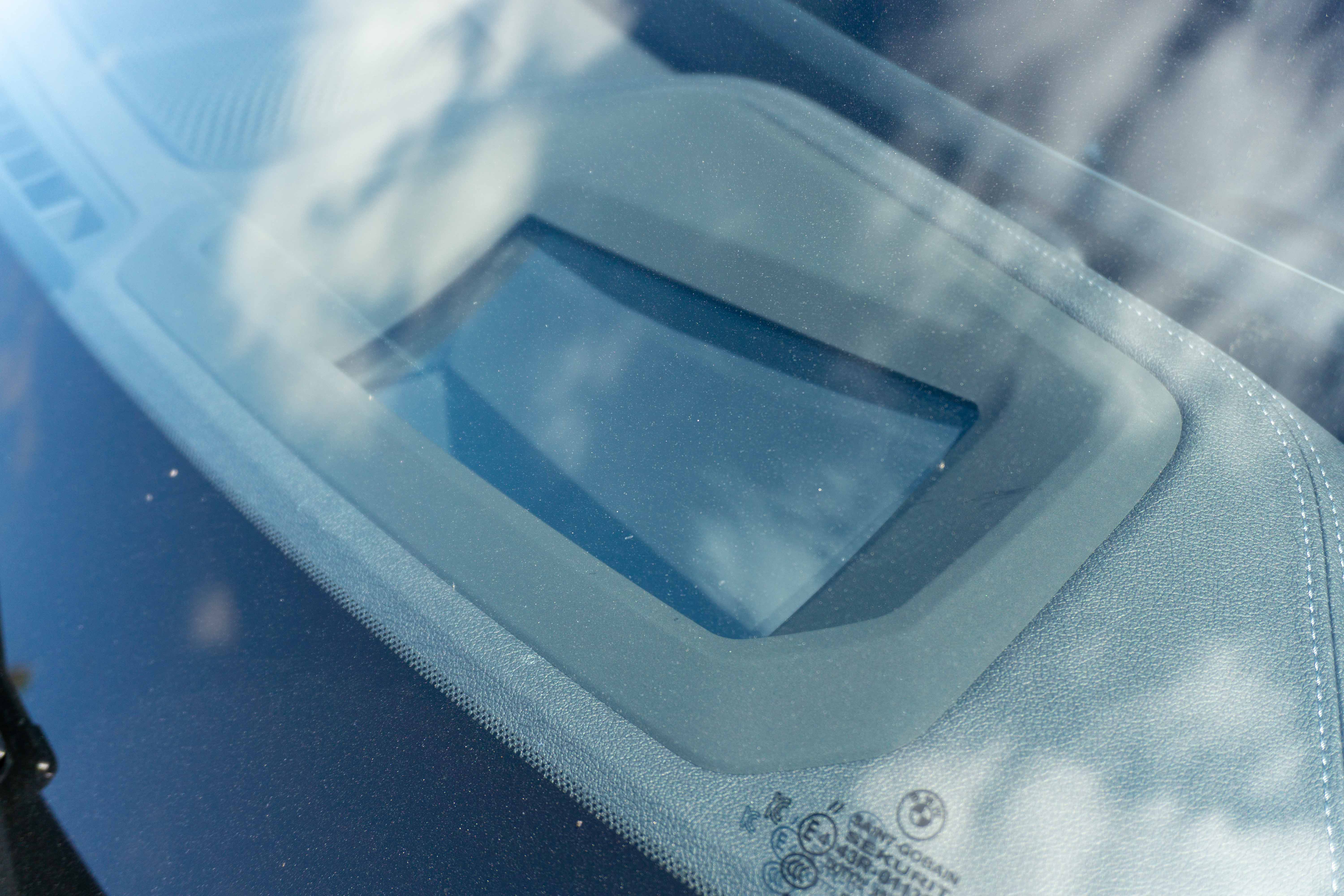 In addition, the car is equipped with a high-end Harman/Kardon audio system worth 8,000 yuan and wireless phone charging, which includes 17 speakers and a total power of 535 watts.
In addition, the car is equipped with a high-end Harman/Kardon audio system worth 8,000 yuan and wireless phone charging, which includes 17 speakers and a total power of 535 watts.
When using CarPlay to play streaming music, the overall sound field is not stunning. It has better bass experience and higher clarity than Tesla Model 3, but there is some difference when compared with NIO ET5. Additionally, after choosing the Harman/Kardon option, the large bass unit will occupy 2/3 of the lower volume of the trunk.
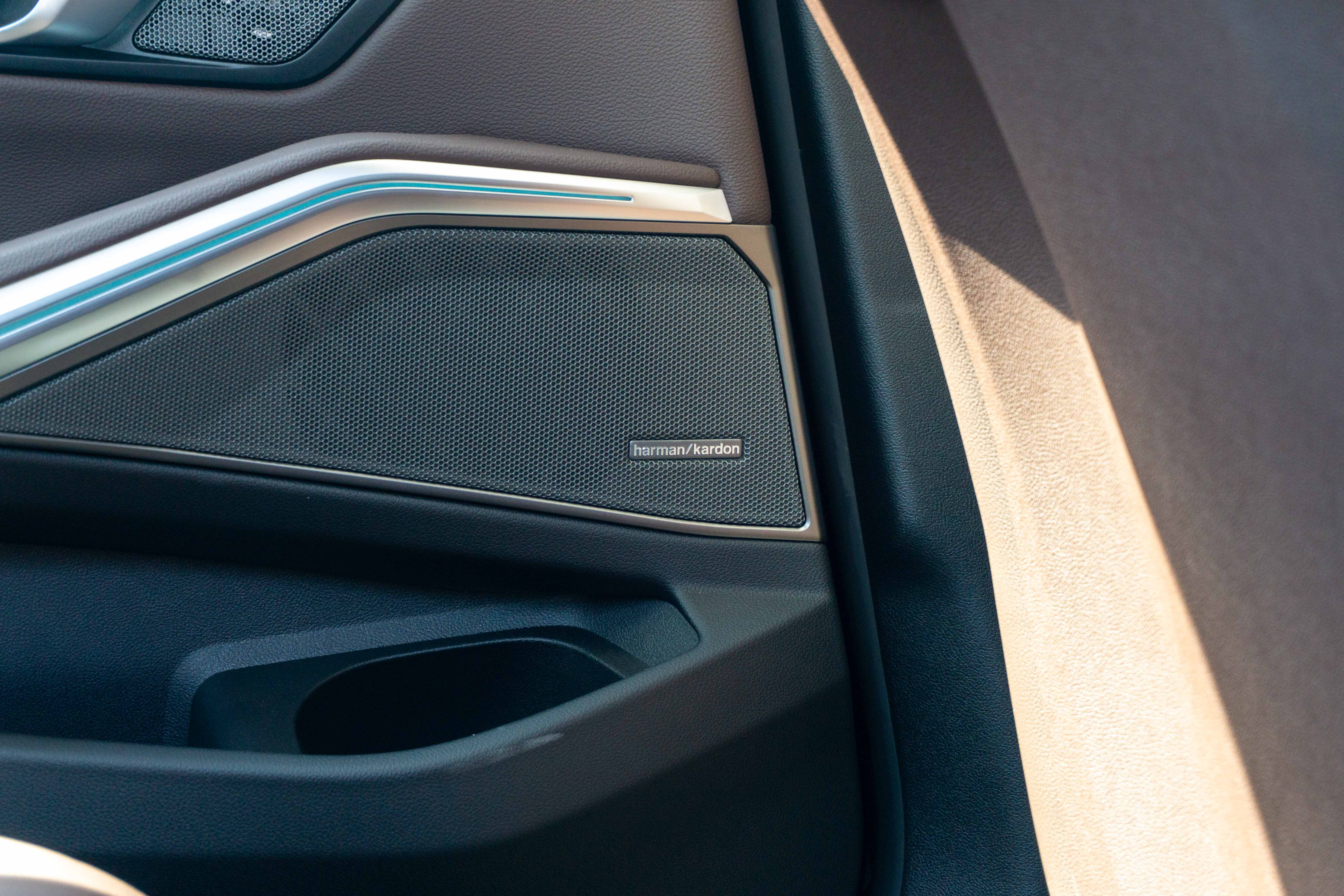
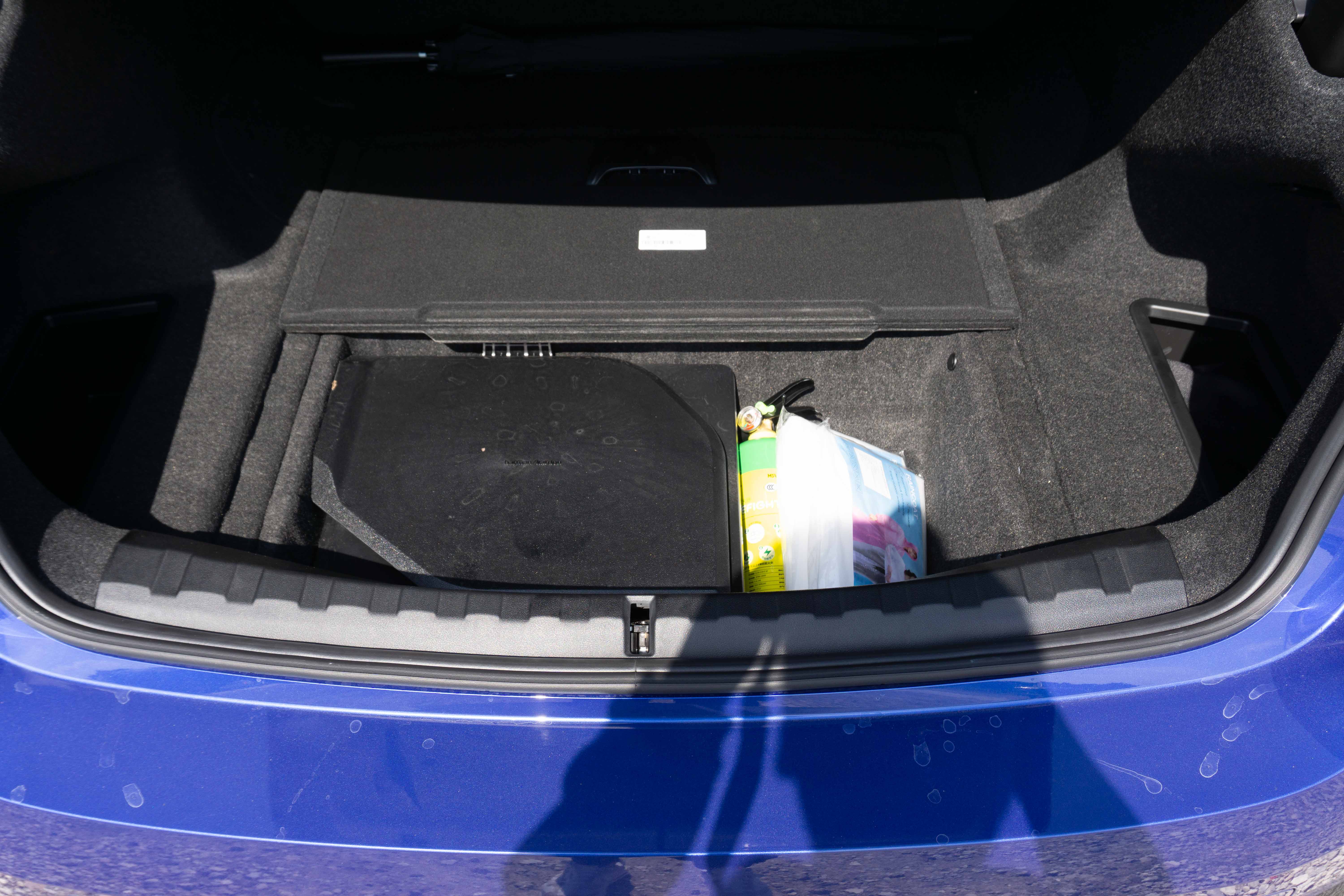
After connecting to wireless CarPlay, there is a significant heating problem when charging the phone wirelessly on the charging pad (iPhone 12 as an example). If there is no special high requirement for sound quality, the entertainment package worth 8,000 yuan (including Harman/Kardon and wireless charging) has little significance when choosing options.
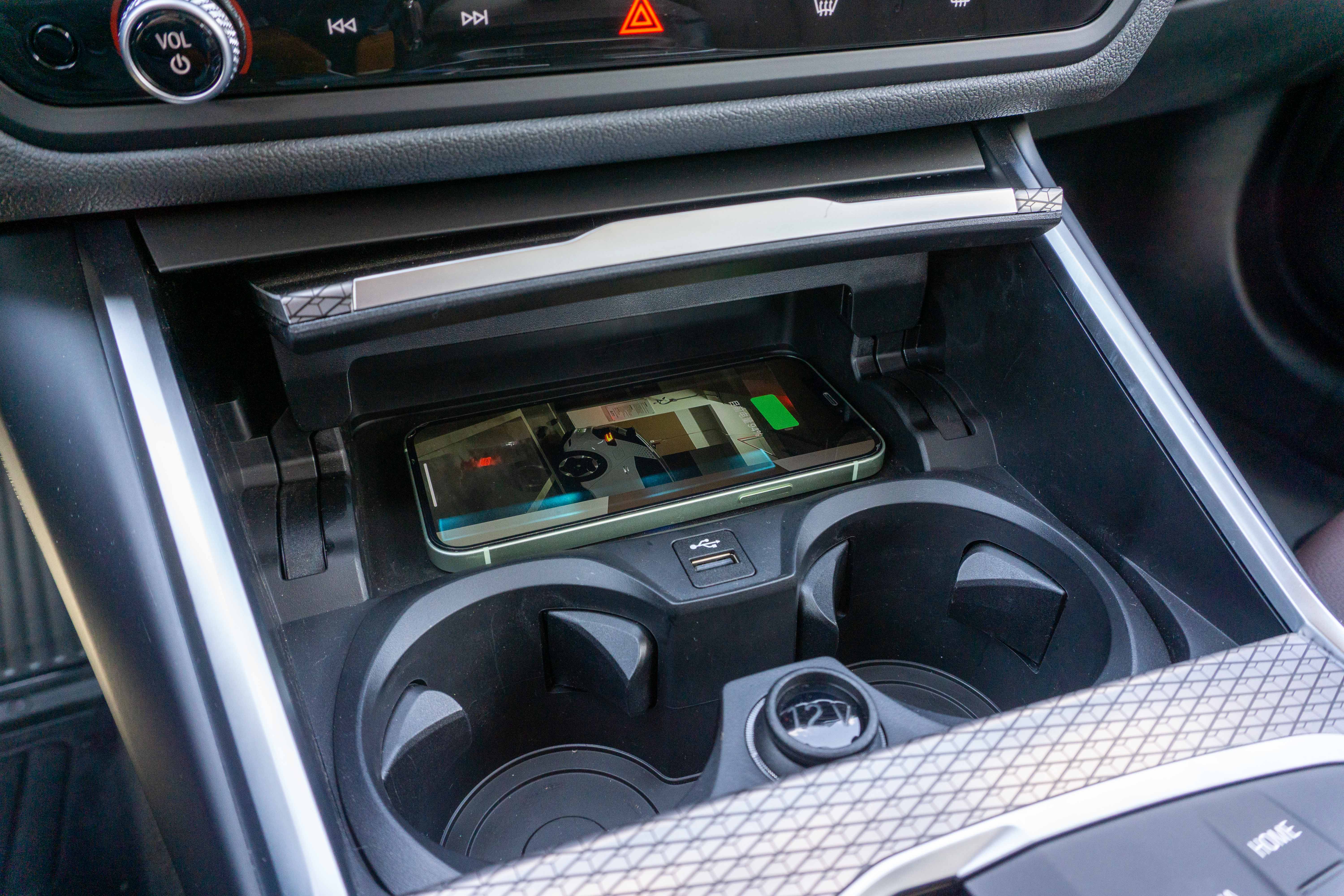
In terms of the cockpit, the BMW i3 is relatively conservative and does not have too many fancy features. BMW still starts from practicality while introducing innovative elements, giving the driver a familiar user experience.
Little Impact of the Battery on Space
After adding the battery to the bottom of the car, the floor of the car has been slightly raised compared with the fuel version of the 3 Series, so the overall sitting posture and steering wheel position have been moved upward by a certain amount.
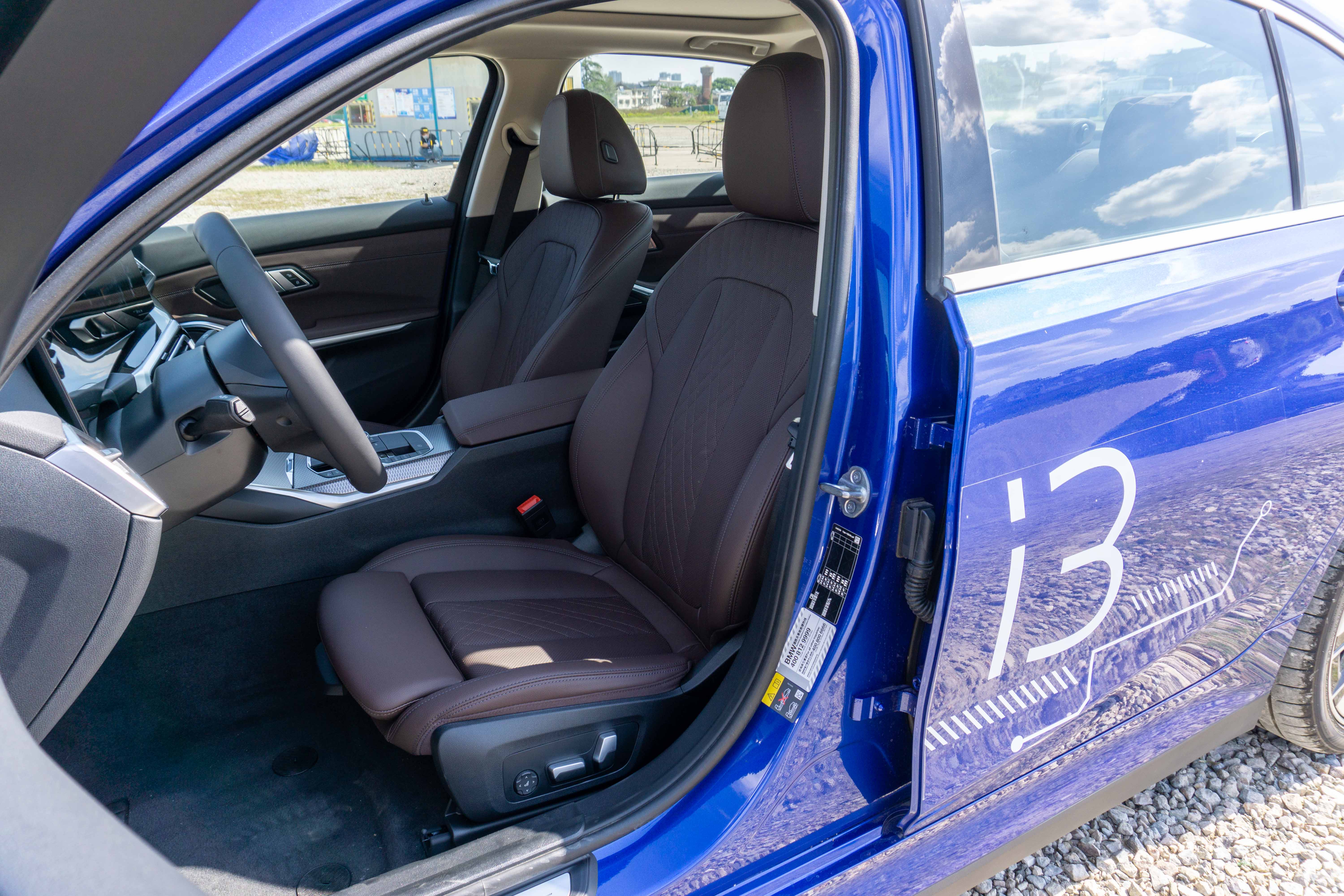
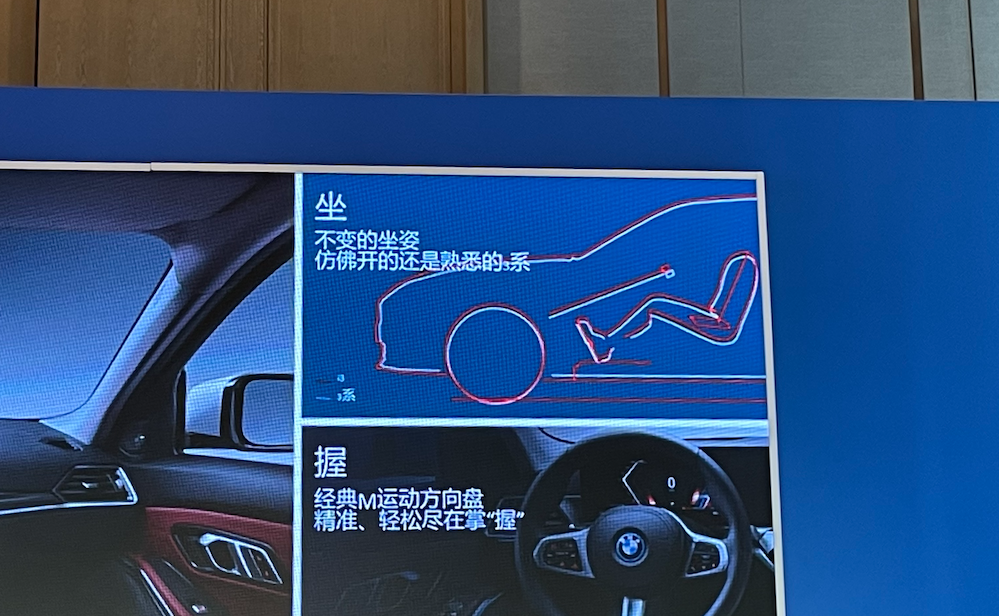
However, the actual experience is that the elevated sitting posture of the i3 is not easy to detect, and sitting in the driver’s seat still feels like a relatively low posture, and the legs can naturally bend and stretch forward.
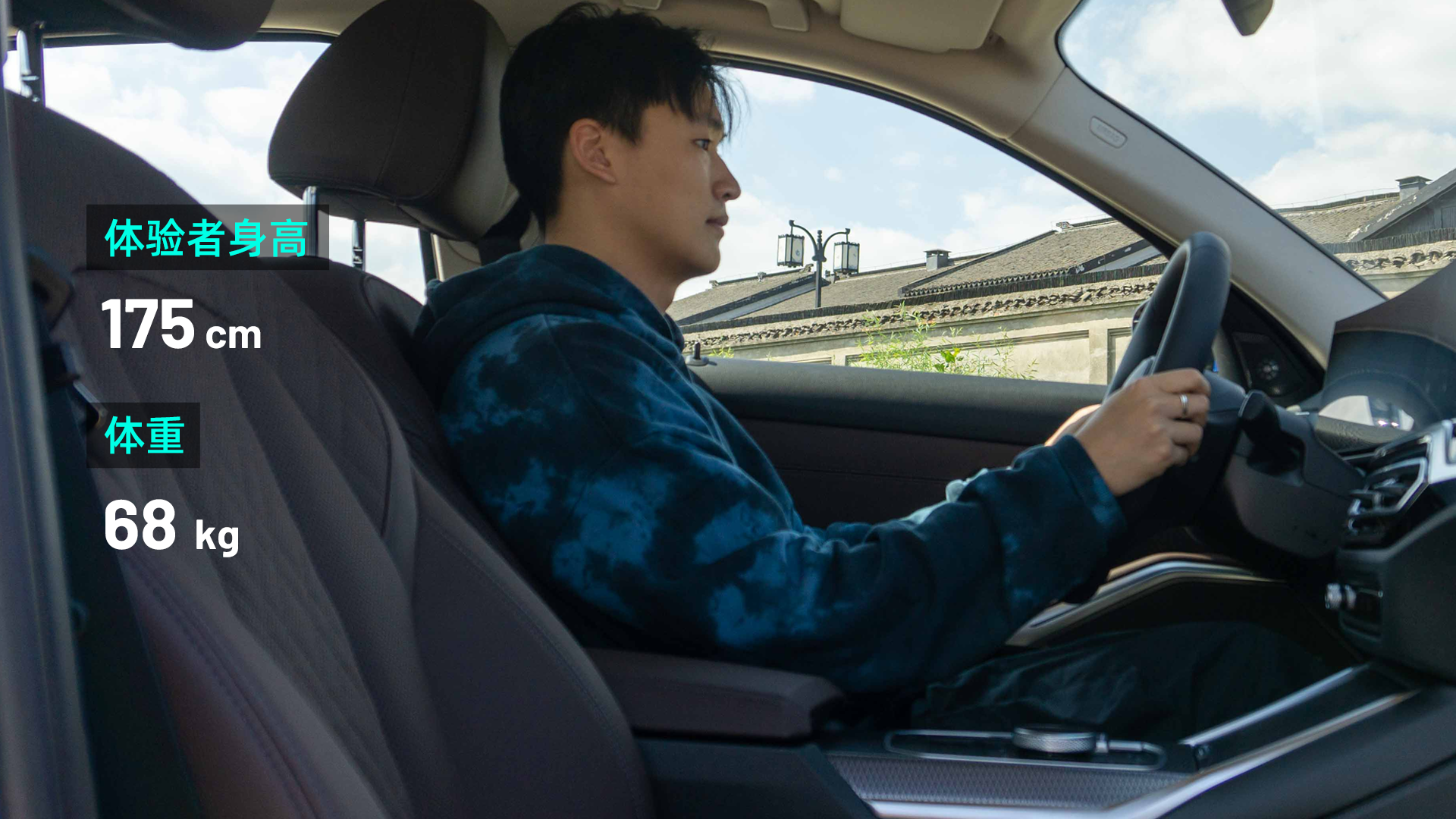 When seated in the back row of the BMW i3, both legroom and headroom have a good performance. As someone who is 175 cm tall and weighs 68 kg, with the driver’s seat adjusted to my preferred position, the legroom is two fists and the headroom is one fist. Even for taller people sitting in the back seat, they won’t feel cramped.
When seated in the back row of the BMW i3, both legroom and headroom have a good performance. As someone who is 175 cm tall and weighs 68 kg, with the driver’s seat adjusted to my preferred position, the legroom is two fists and the headroom is one fist. Even for taller people sitting in the back seat, they won’t feel cramped.
However, due to the raised floor, there is a particularly small gap between the front seats and the floor. This means that it is impossible for the foot to naturally stretch under the front seat when wearing shoes. Forcing the foot to fit under the seat may cause discomfort.
Fortunately, the angle of the backrest in the backseat is large enough and the cushion support is long enough. Plus, it comes with a standard comfort headrest for the back seat, so sitting on the left and right sides is still very comfortable. Even sitting for 3 hours won’t cause any discomfort.
The above conclusion is only for passengers on the left and right sides of the backseat. Since it is a CLAR hybrid platform, the i3 still has a huge bulge left for the driveshaft. However, this part is replaced by a battery pack for the i3 rather than the transmission and driveshaft of the 3 series.
The height of this bulge is already higher than an iPhone 12 with a height of 14.67 cm. The passenger in the middle has to place their legs on both sides and also endure a harder armrest. The riding experience is inferior, and the emergency attributes of the back-center seat have greater importance than its practical use.It is worth mentioning that the cushion filling of BMW i3 is very thick, with a soft upper sponge and a hard lower-middle sponge, providing both wrapping and support, making it comfortable for passengers to sit for a long time. The choice of leather used for the BMW i3’s seat surface is also a personal highlight of mine. The official website calls it Sensatec synthetic leather, which is a leather material used in the BMW model. Although it feels rough to the touch, this leather is very durable.
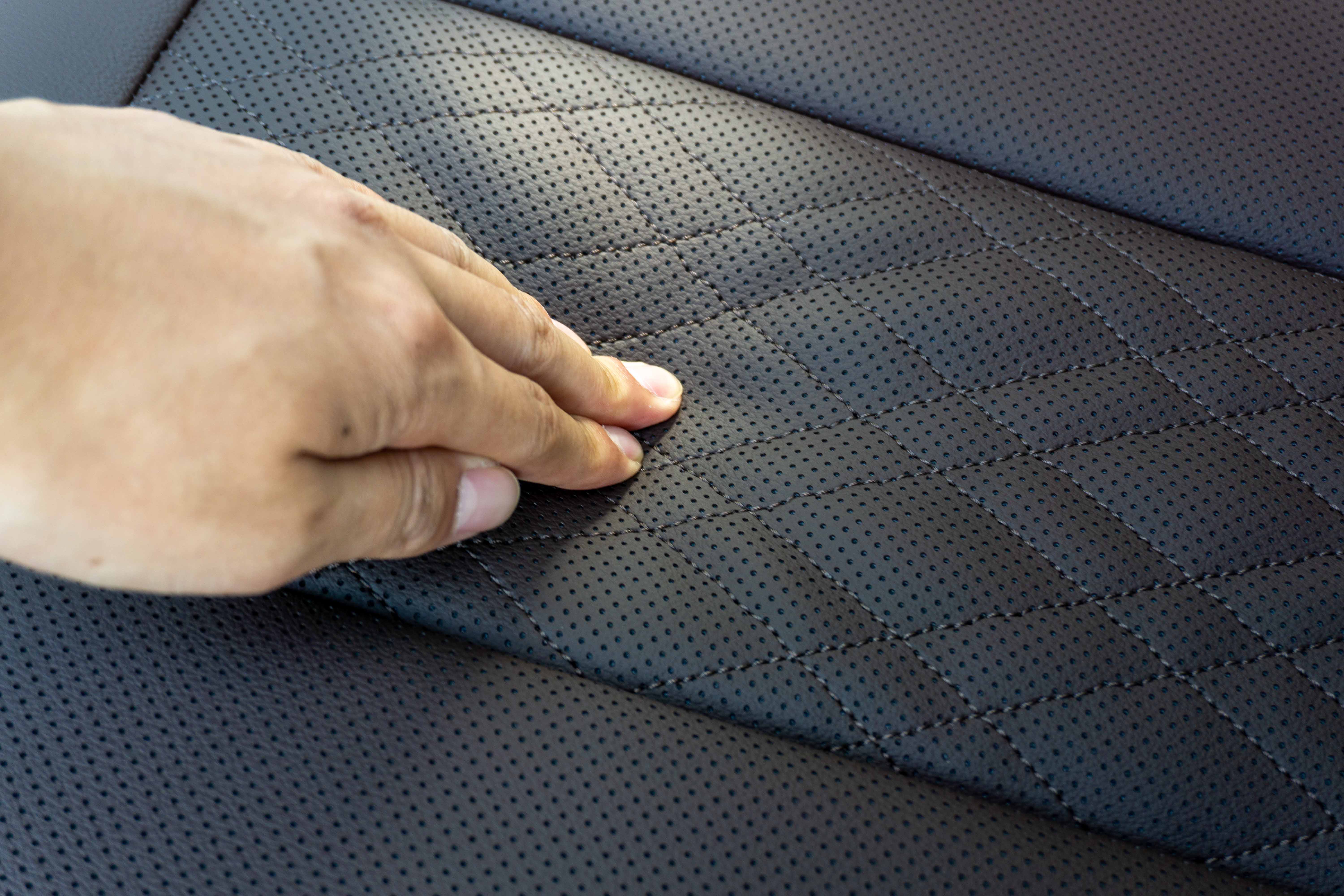
Compared with some pure electric vehicles, the “oil-to-electric” i3 can guarantee sufficient head and legroom in the second row. Of course, the huge hump in the middle of the second row is also an unavoidable pain for the i3.
Does the dynamics have highlights to find, or is the suspension only for posture?
The 3 Series has significant meaning for BMW. In 1975, BMW launched the first generation of 3 Series, codenamed E21. Today, with the G20, the 3 Series has already developed seven generations of models. For BMW, the 3 Series defines sport luxury, and it also inherits the brand’s classics and culture.
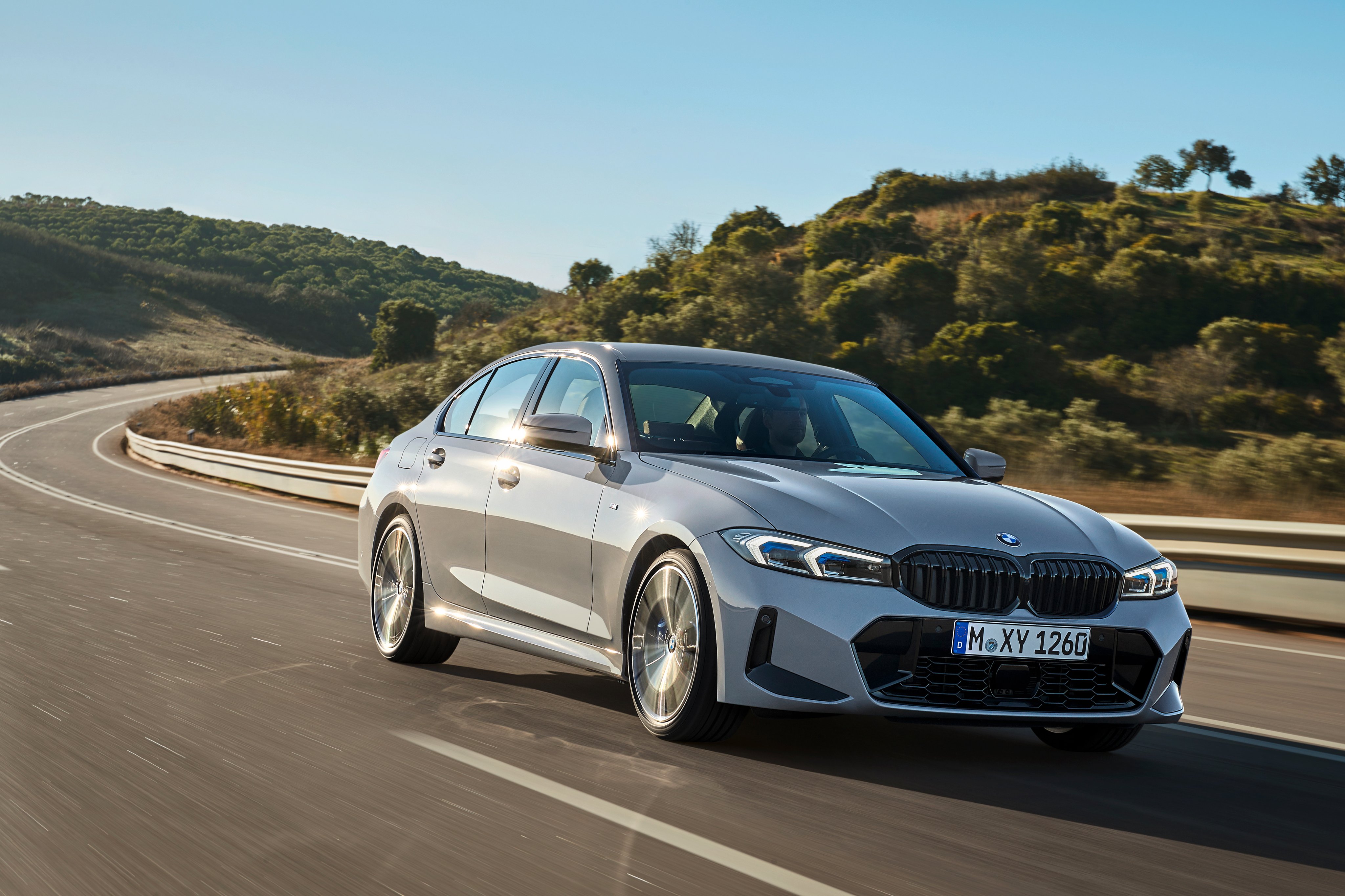
Combining the sport luxury of the 3 Series with the electrification of the i, BMW has delivered a brand-new BMW i3 in the current electrification era. As a BMW and a 3 Series, it must be driven to feel the difference.
The BMW i3 we test drove is the eDrive 35 L model, which uses a rear-mounted synchronous motor with a maximum power of 210 kW, a maximum torque of 400 N·m, and an official 0-100 km/h time of 6.2 seconds. Switching to sport mode and fully pressing the accelerator pedal, the acceleration force is instantly established, and the 210 kW power is more than enough for daily use.
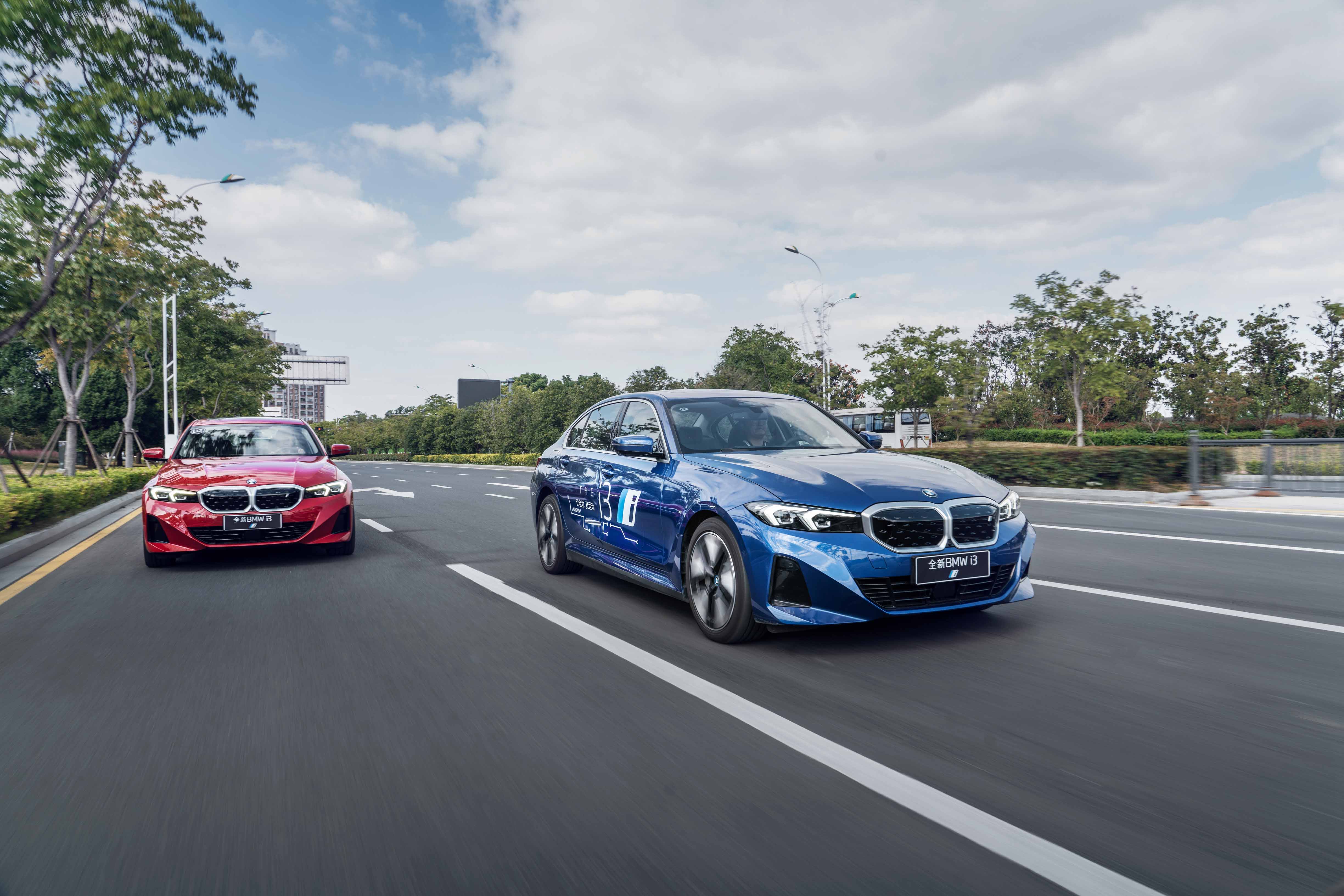
Although the 6.2-second acceleration time is not impressive compared to products in the same price range, it still provides a similar sense of tension as the competitors. The main source of tension comes from the simulated sound system tuned by BMW and Hans Zimmer.
Unlike many electric cars, the simulated sound of the i3 is not obviously emitted from the speakers, but it feels like it emanates from around the entire cockpit. The tone is very pleasant and does not imitate the sound of traditional fuel cars. Instead, it retains some feeling of electricity, and I can even feel like I am on a spaceship.“`html
And the tone is not as monotonous as other electric cars. The tone of the i3 is very full, and the tone becomes more passionate as the speed increases, just like the different tones of a gasoline car between 1,500 rpm and 6,000 rpm. **The simulated sound waves tuned by the master of film, Hans Zimmer, can indeed affect the emotional changes of the driver and passengers in the car. It should be noted that the simulated sound wave is an optional configuration for the i3, and the optional price is 1,900 yuan**.
In terms of steering feel, the electronic assistive damping force of the i3 is relatively heavy among today's electric cars, and the gain increases with speed, which can establish a strong communication feeling with the driver. However, compared with the hydraulic-assisted 3 Series in the past, it still lacks some meaning in sports and directionality. But the advantage of electronic assistance is that it is still relatively light when shifting at low speeds, which is more friendly to many people with small hand strength or female drivers.
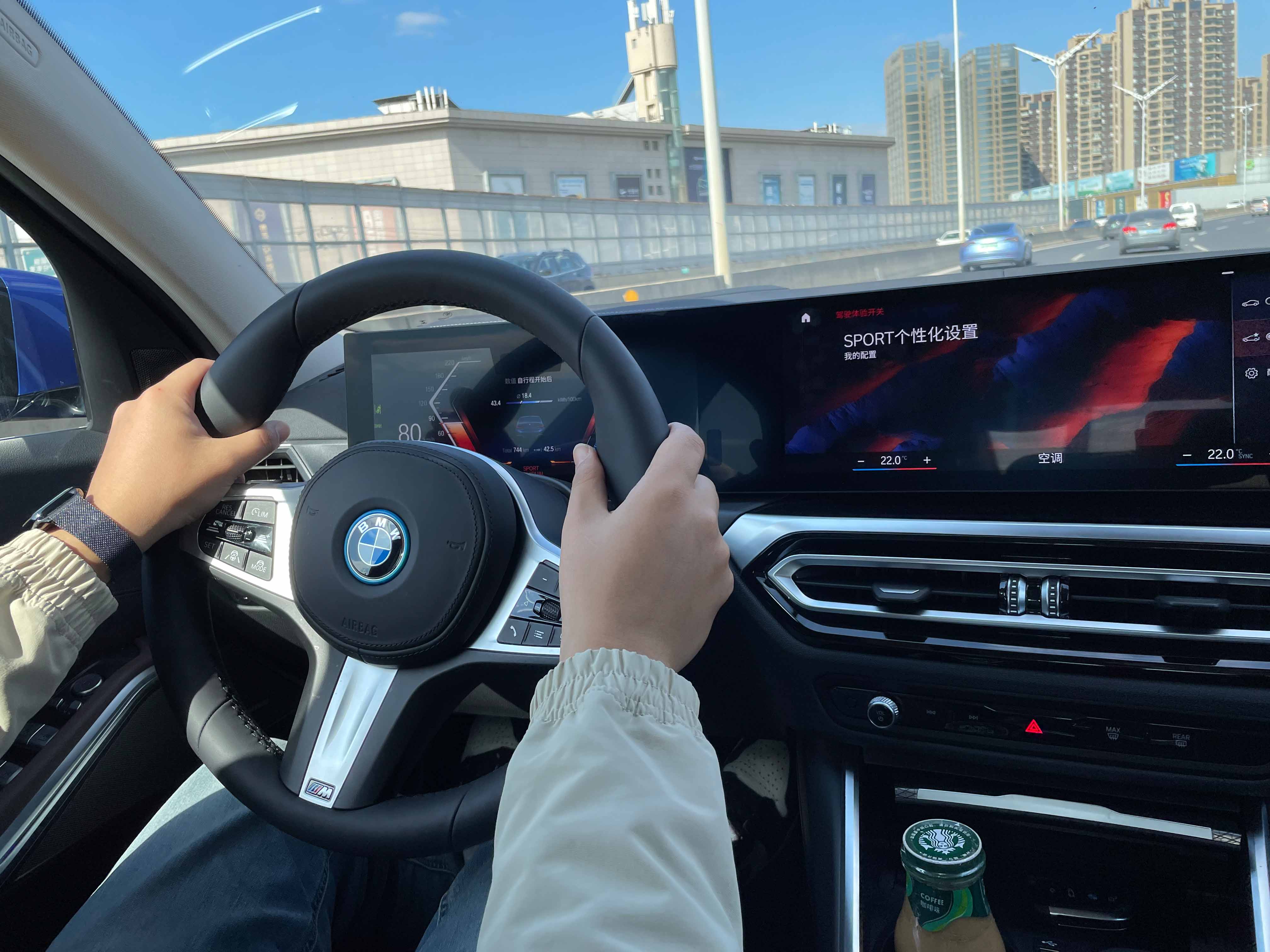
The BMW i3 is equipped with HRS hydraulic rebound damping technology as standard on the chassis. **In terms of principle, HRS can automatically provide a certain damping force to offset the upward shock of the vehicle spring, so as to avoid more rigid impact on the limit stop**.
During the test drive, I deliberately looked for sunken manhole covers and speed bumps that are characteristic of my country. When the BMW i3 quickly passes over the manhole cover, the action is very clean and neat, and the vehicle will not have any extra bounce. **Especially when quickly passing over the manhole cover, when the body falls and the front wheel is about to hit the road, the driver's psychological expectation will have a strong impact feeling. However, in fact, the i3 will resolve the strong impact. With the dull "dong-dong" twice, the whole car will drive away from the manhole cover**.
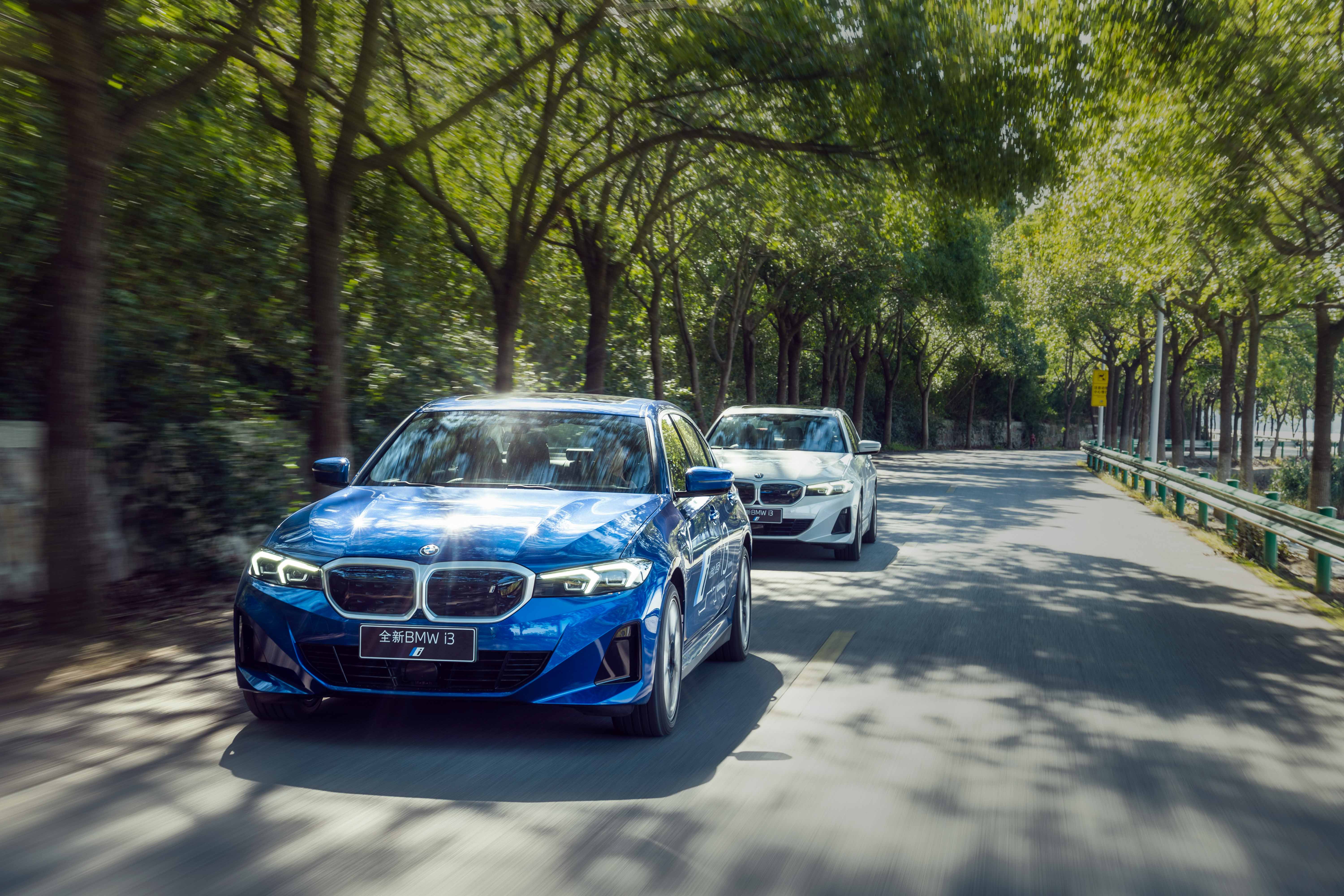
Drivers won’t feel the suspension compressed to the limit, and passengers won’t be thrown out of their seats due to the impact and rebound of the suspension. Similarly, when passing a speed bump, the stiffer steel springs of the German cars at the same level will make the vehicle have a significant bouncing sensation, while the i3 with HRS will handle bumps in a more comfortable and less intense way.
In addition, the BMW i3 is also equipped with air suspension on the rear axle. It should be noted that unlike other models, the i3 does not have air suspension on all four wheels. BMW officials stated that the reason why the i3 is equipped with air suspension on the rear axle only is to maintain the vehicle’s height and achieve a better appearance.
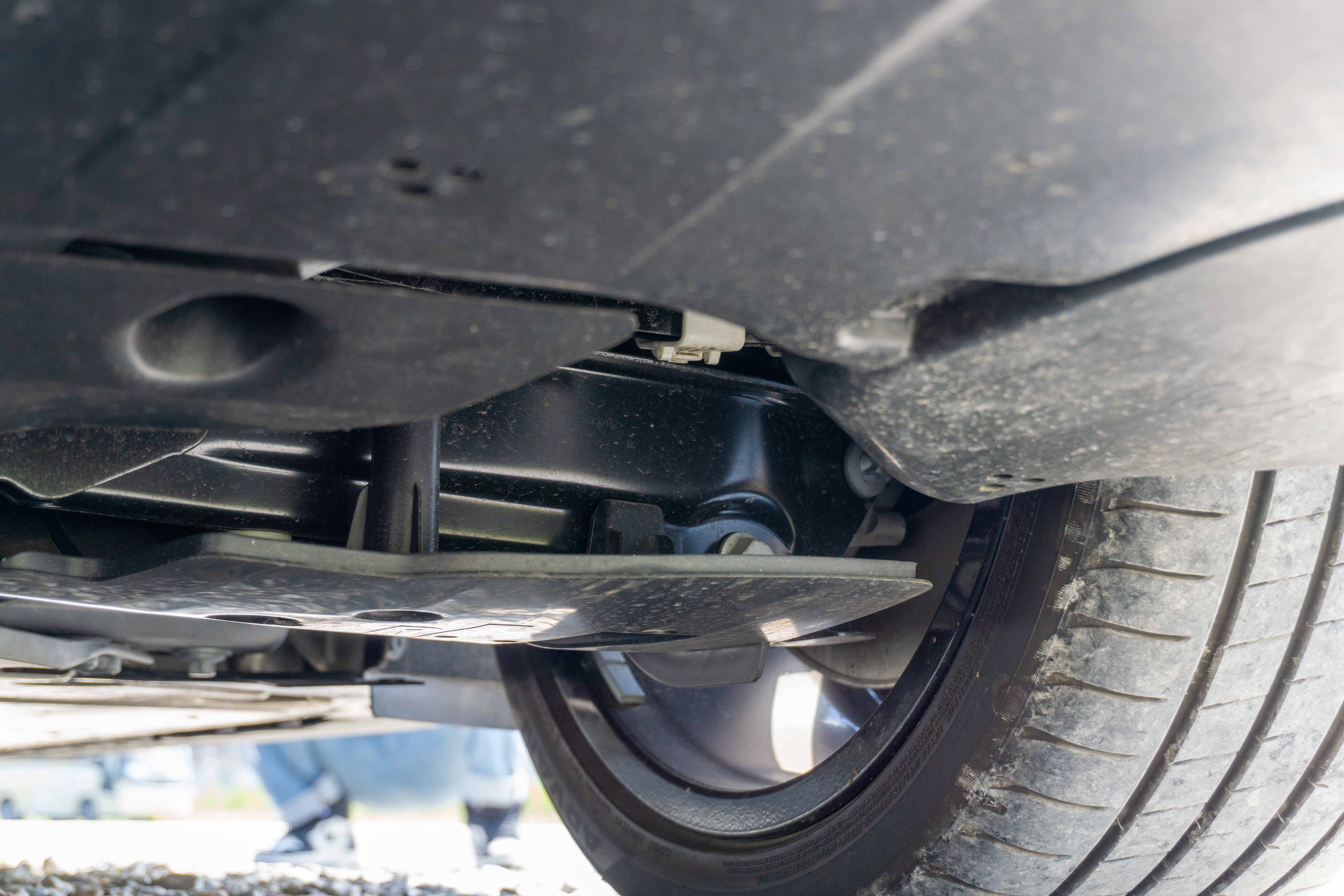
The main reason for this decision is that the i3 has a large number of batteries located in the position where the 3 Series fuel tank was originally located, resulting in a larger load at the rear end. If three heavy passengers sit in the back seat, it is easy for the car to sag at the rear end. Therefore, single rear air suspension configuration is very common, not only in BMW i3, but also in many pickups and vans, which is also used to maintain vehicle height.
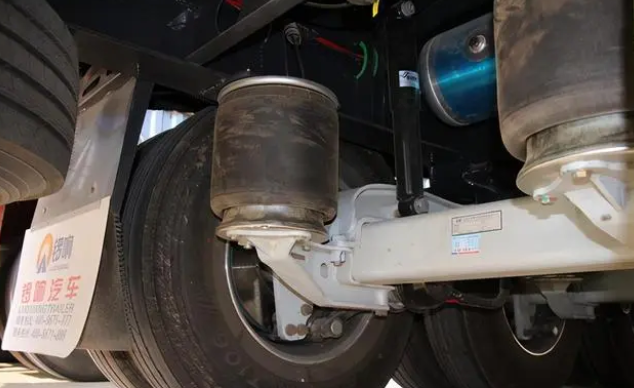
Of course, the difference in the BMW i3’s rear air suspension can still be felt during actual driving. When switching from Comfort mode to Sport mode, the rear axle will become tighter and some bumps will be handled and filtered slightly better than the front axle.
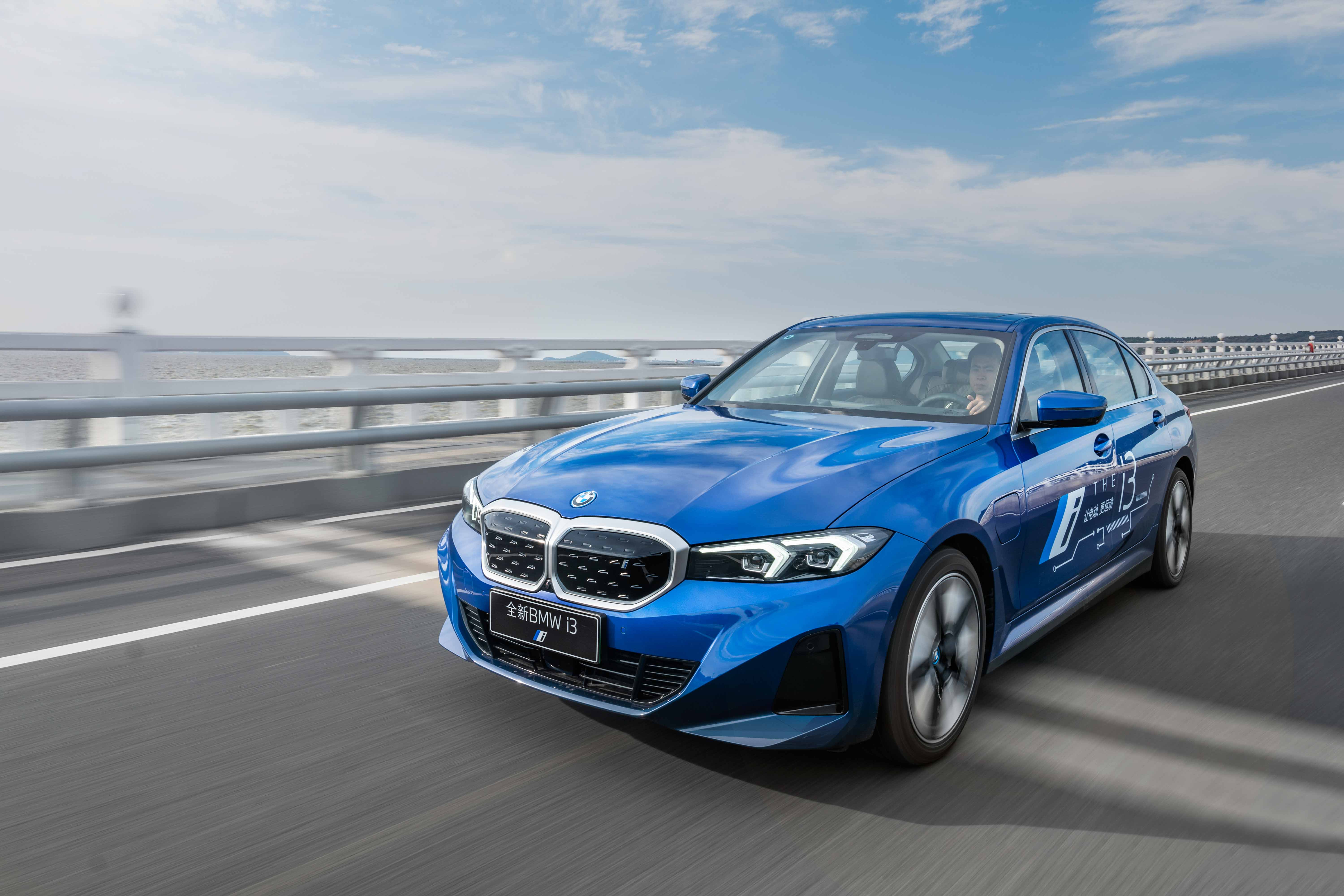
In general, driving is still one of the BMW i3’s strengths, and the overall performance of the suspension is very balanced. Whether it’s sport or comfort, there’s no significant bias. It satisfies the driver’s pursuit of driving enjoyment, and it can also satisfy a comfortable ride for the whole family, including children. Although it is an electric power platform, it has not become very sluggish in terms of driving and handling due to the increased weight of the body, and it is still a standard pure electric 3 Series created by BMW.
There’s a surprise in energy consumption.The outdoor temperature on the day of the test drive was around 10-20°C, which is a friendly season for electric cars. There were four adults in the car and the air conditioning was set to 22°C with two fan speeds. I drove a total of 60.7 km, with an average speed of 45 km/h in Comfort mode for the entire journey. However, my driving style was slightly aggressive, and I consumed 4.5 kWh of electricity and the displayed energy consumption was only 14.7 kWh/100 km, which is a good result considering that the rear axle of the i3 is a 210 kW excitation motor.
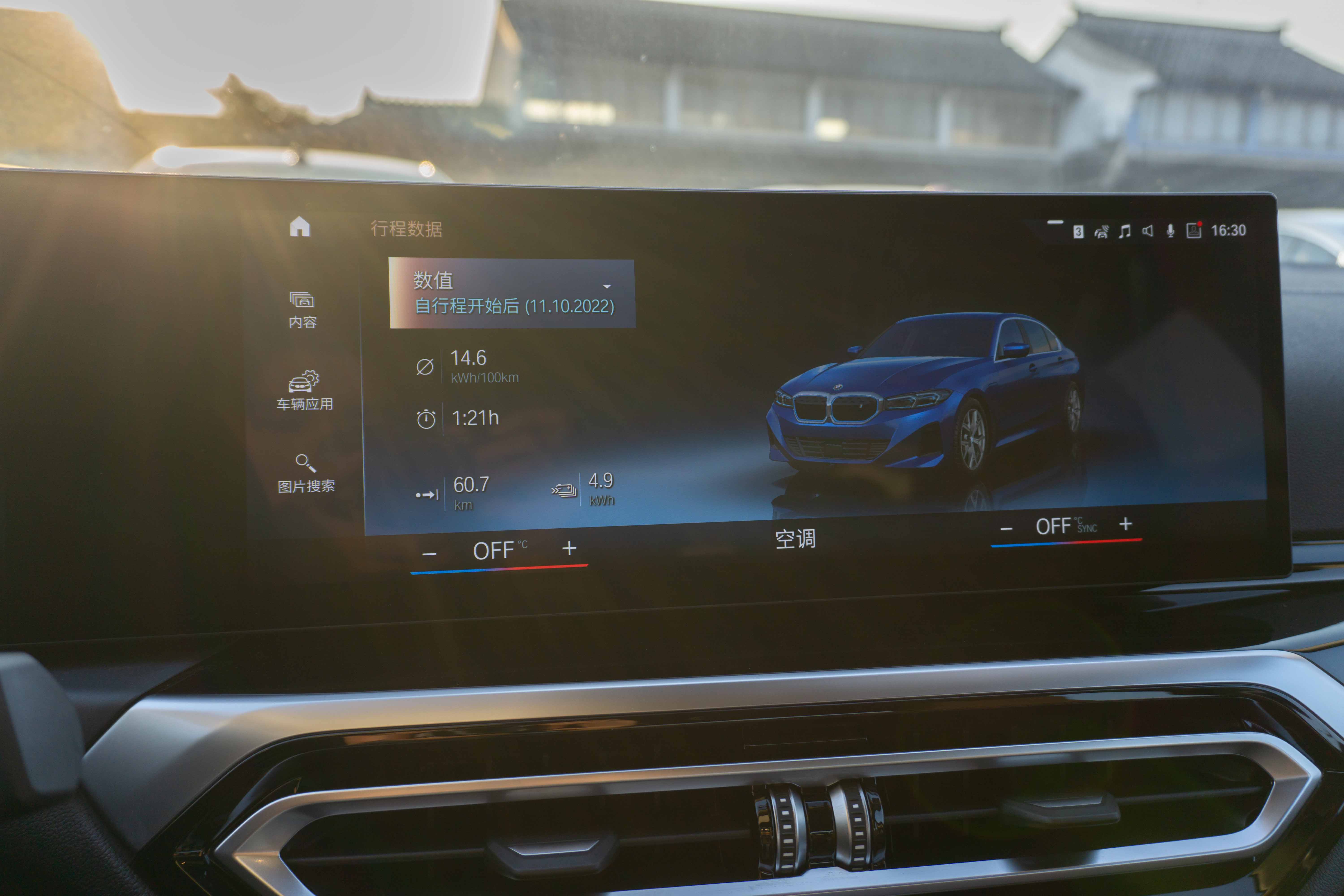
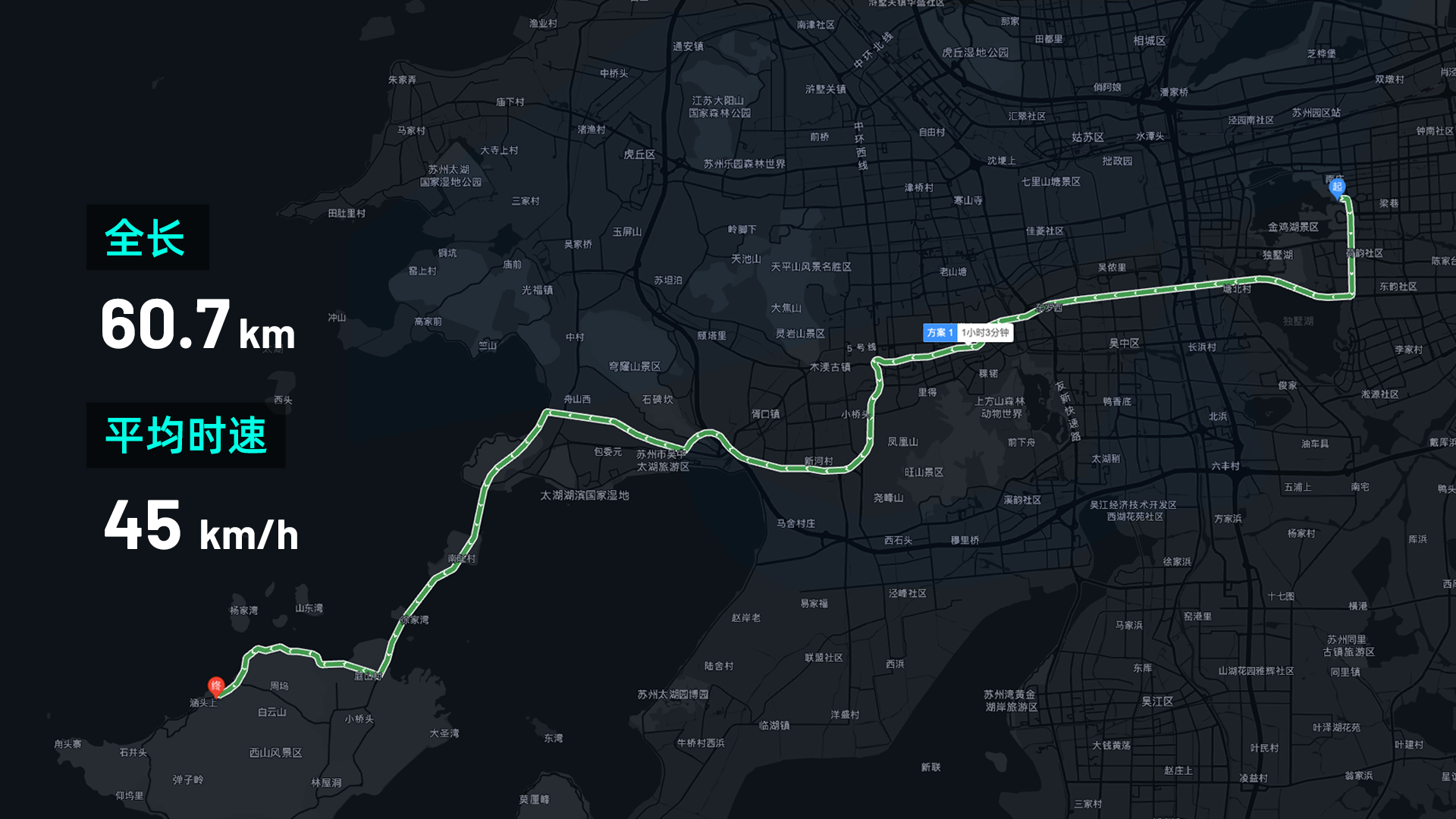
It is worth mentioning that the BMW i3 has achieved a certain balance between passenger comfort and energy consumption. In addition to providing the B gear, the i3 also provides adaptive power recovery under the D gear. The principle is that the vehicle judges the dynamics of the front vehicle through the front millimeter-wave radar and the front three visual cameras, and adjusts the strength of the motor recovery accordingly.
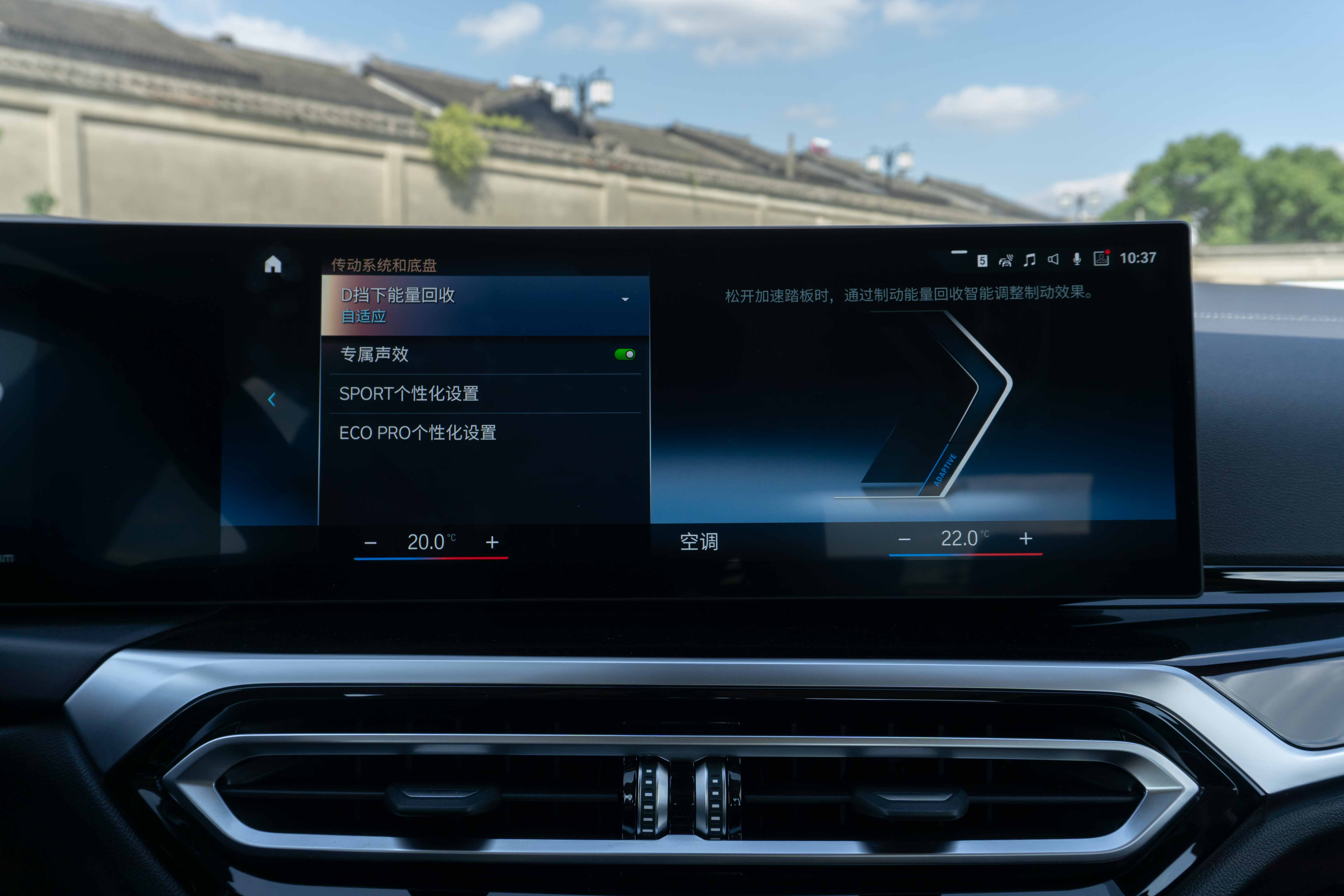
If there is no vehicle ahead, the vehicle’s power recovery will be automatically adjusted to the weakest, allowing the vehicle to be in a gliding state as much as possible after releasing the accelerator pedal. If there is a vehicle ahead, the vehicle will judge the distance to adjust the strength of the power recovery.
In terms of user experience, i3’s adaptive power recovery will give you the illusion of driving with adaptive cruise control. For example, when I was merging into the right lane, after half of my car entered the lane, the vehicle automatically recognized that the distance to the preceding vehicle was short and increased the strength of the power recovery accordingly, which is quite good.
Compared with the B gear, the adaptive power recovery mode is the power recovery mode that is the most comfortable for passengers to feel when they first drive the car.
Stable Performance of Driving Assistance
After experiencing the function of adaptive power recovery similar to the ACC function of driving assistance, I began to be curious about the real driving assistance capability of the BMW i3.
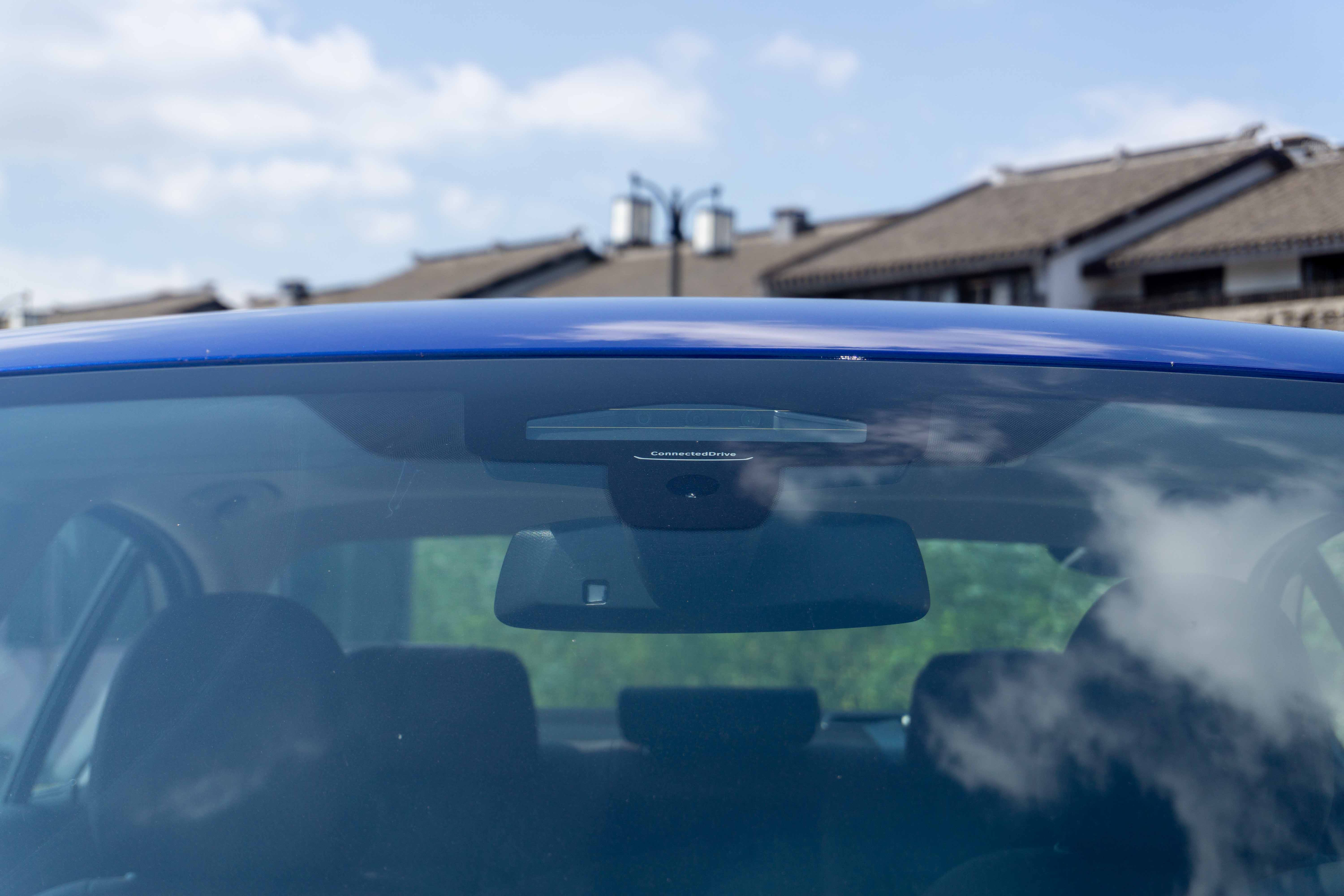 In terms of hardware, the BMW i3 is equipped with five millimeter-wave radars (one forward-facing and four side-facing) and a set of forward-facing three-camera vision system. The visual perception chip used is the Mobileye EyeQ4 chip, which is consistent with most products in the BMW family.
In terms of hardware, the BMW i3 is equipped with five millimeter-wave radars (one forward-facing and four side-facing) and a set of forward-facing three-camera vision system. The visual perception chip used is the Mobileye EyeQ4 chip, which is consistent with most products in the BMW family.
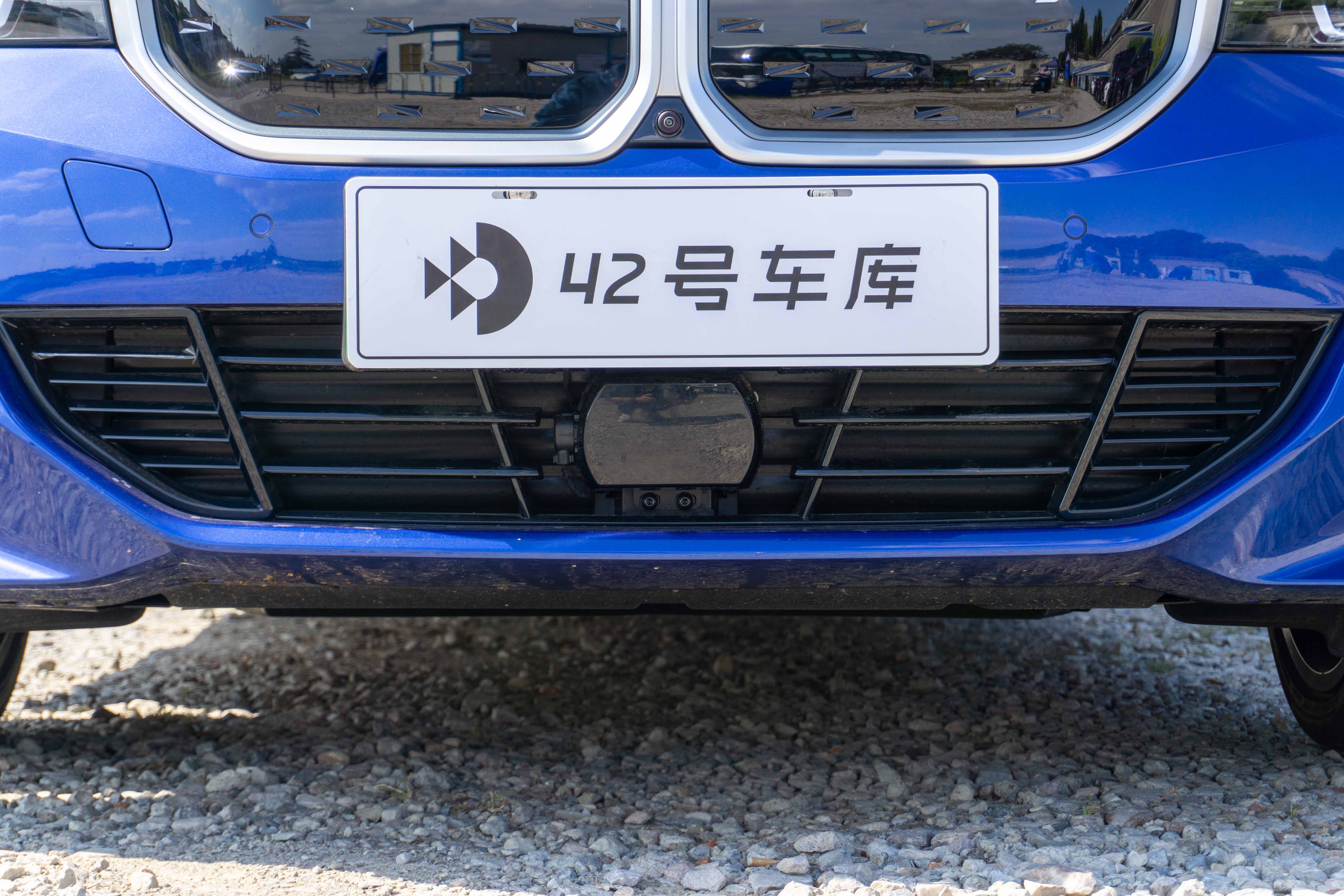
In addition to the conventional adaptive cruise control, the BMW i3 also has instruction-based lane change and ASSIST PLUS (traffic congestion assistance), which are considered to be more feature-rich in traditional brand assisted driving.
The basic assisted driving capability of the BMW i3 is very stable, and the overall user experience is similar to that of the models we have previously tried with Mobileye EyeQ4. The acceleration and deceleration are very gentle, and there is no more mechanized correction in the center keeping, which is closer to human driving experience.
In low-speed conditions (below 60 km/h) on the elevated ring road, the vehicle can provide ASSIST PLUS function, which can be turned on by pressing the MODE key on the lower left of the steering wheel. After opening, the green light bar on both sides of the steering wheel will light up, similar to the SuperCruise light bar on Cadillac.
At this time, the driver can temporarily free his hands, and the vehicle will use DMS to detect the driver’s state, and the function does not require the driver to always put his hands on the capacitive steering wheel.

However, the driver still needs to pay attention to the road and the vehicle’s visual display at all times. Because the i3’s handling of alternating traffic and low-speed lane changes is relatively slow. In the case of following at 1-2 gears, the braking point of the vehicle will far exceed the driver’s psychological expectation, so it is recommended to take over in time to avoid accidents that may occur when pushed to the limit.
In addition, the i3 also supports instruction-based lane change function, which is very gentle in terms of timing and action, and can recognize solid and dashed lines. However, this function can only be used when the vehicle speed is over 70 km/h.
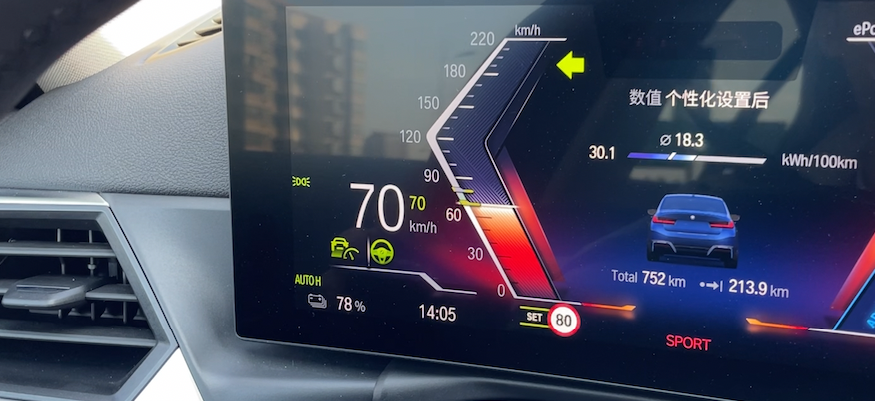
In terms of functional level, the assisted driving of the BMW i3 is far behind the new forces of autonomous brands, but it still belongs to the upper stream in terms of user experience, and can give drivers a strong sense of safety in the scenario of high-speed enclosed roads.The optional price of this advanced driving assistance system is ¥19,990, which includes a collision warning system with emergency brake assist, lane departure warning system, lane keeping assistant, changing lane assistant, and traffic jam assistant. The price is not cheap, but if you commute long distances to work and travel on many elevated and expressway sections, this advanced driving assistance system is still worth considering.
In Conclusion
After test driving the BMW i3, my actual experience of the car was higher than my expectations before the test drive. Although it comes from the same platform as the gasoline-powered 3 Series, BMW has put effort into the pure electric version. On the one hand, the CLAR platform foundation was not bad to begin with, and on the other hand, BMW did not mindlessly install a battery pack in the 3 Series.
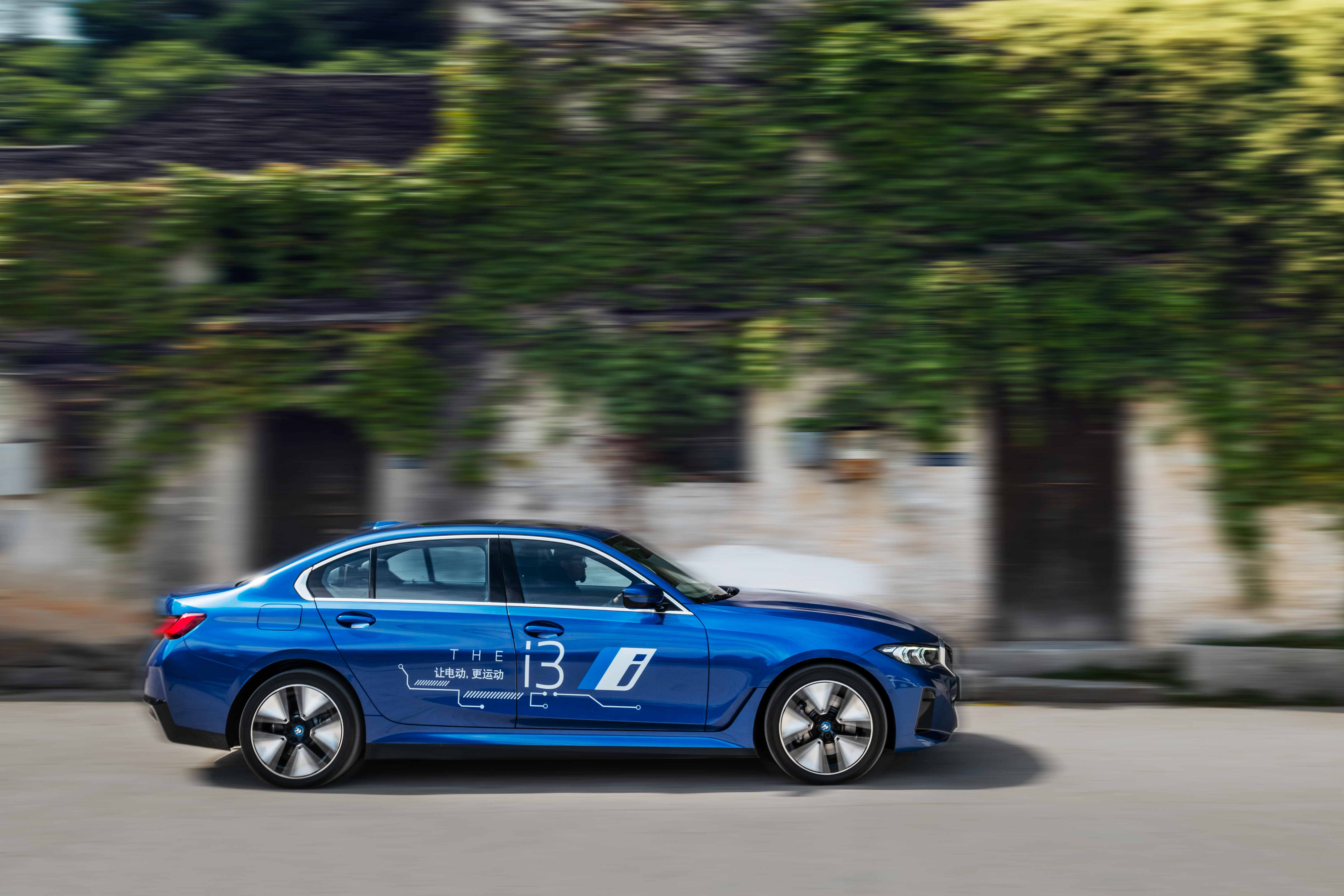
Based on this experience, we return to the two questions in the title.
The BMW i3 undoubtedly surpasses itself. The new i3 has greater practicality than the first-generation i3, stronger power, smoother user experience, and more enjoyable driving experience compared with the gasoline-powered 3 Series at the same price point.
However, the starting price of ¥349,000 makes the i3 less competitive among pure electric products in the same class and price range. If you choose the 19-inch wheels, simulated engine sound, advanced driving assistance system, heated seats, keyless entry and electric tailgate, and front electric lumbar support, the price of the i3 will already reach ¥399,300. If you also choose a high-end audio system and wireless charging, the price of the i3 will easily exceed ¥400,000, making it less competitive in the market.
The good news is that the pure electric SUV iX3, which was launched ahead of the BMW i3, has had some discounts in its retail price, so the sales of the BMW iX3 have been relatively stable. Currently, if the i3 can continue to be promoted with some sales actions, this sporty family pure electric 3 Series will achieve good sales.
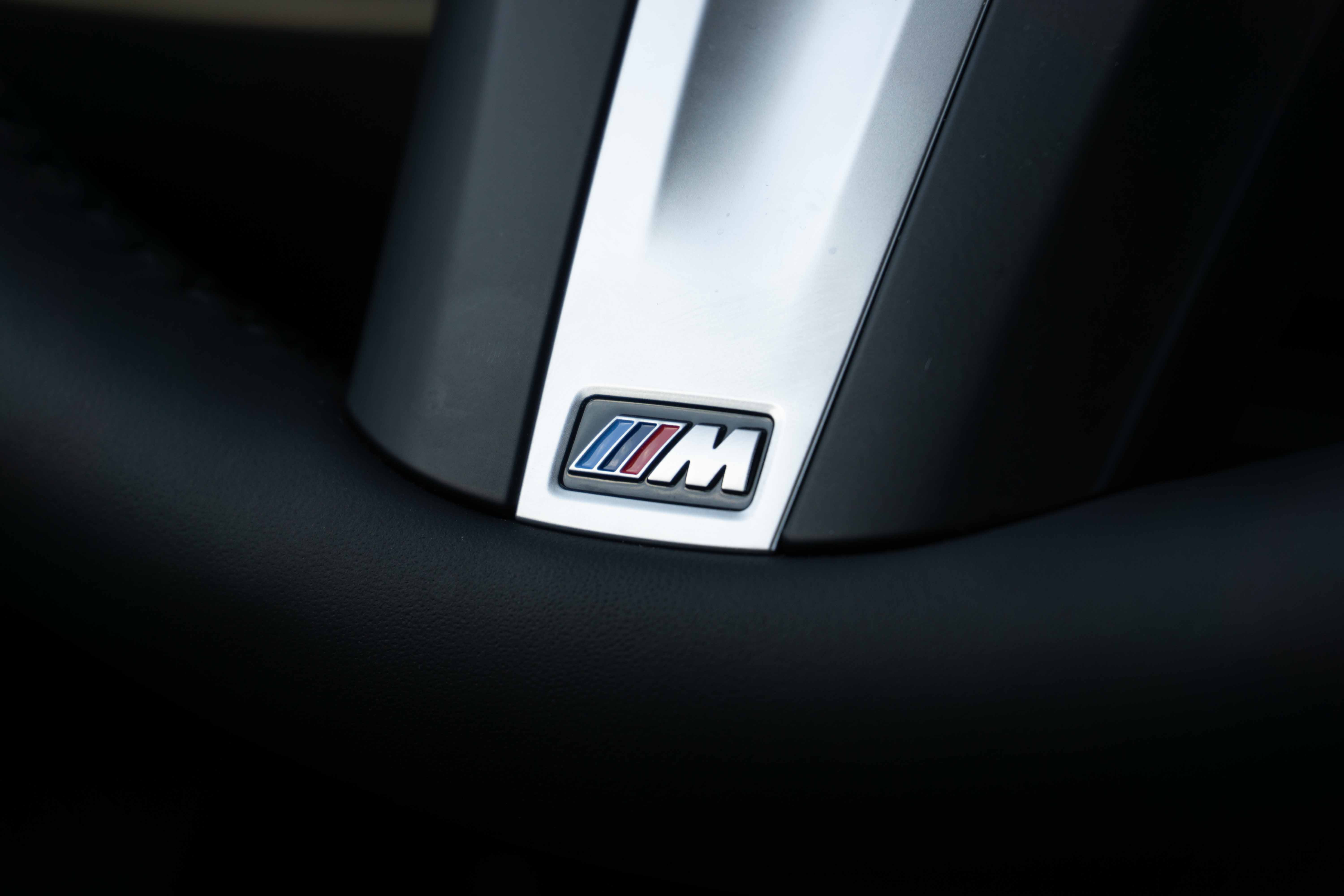
This article is a translation by ChatGPT of a Chinese report from 42HOW. If you have any questions about it, please email bd@42how.com.
